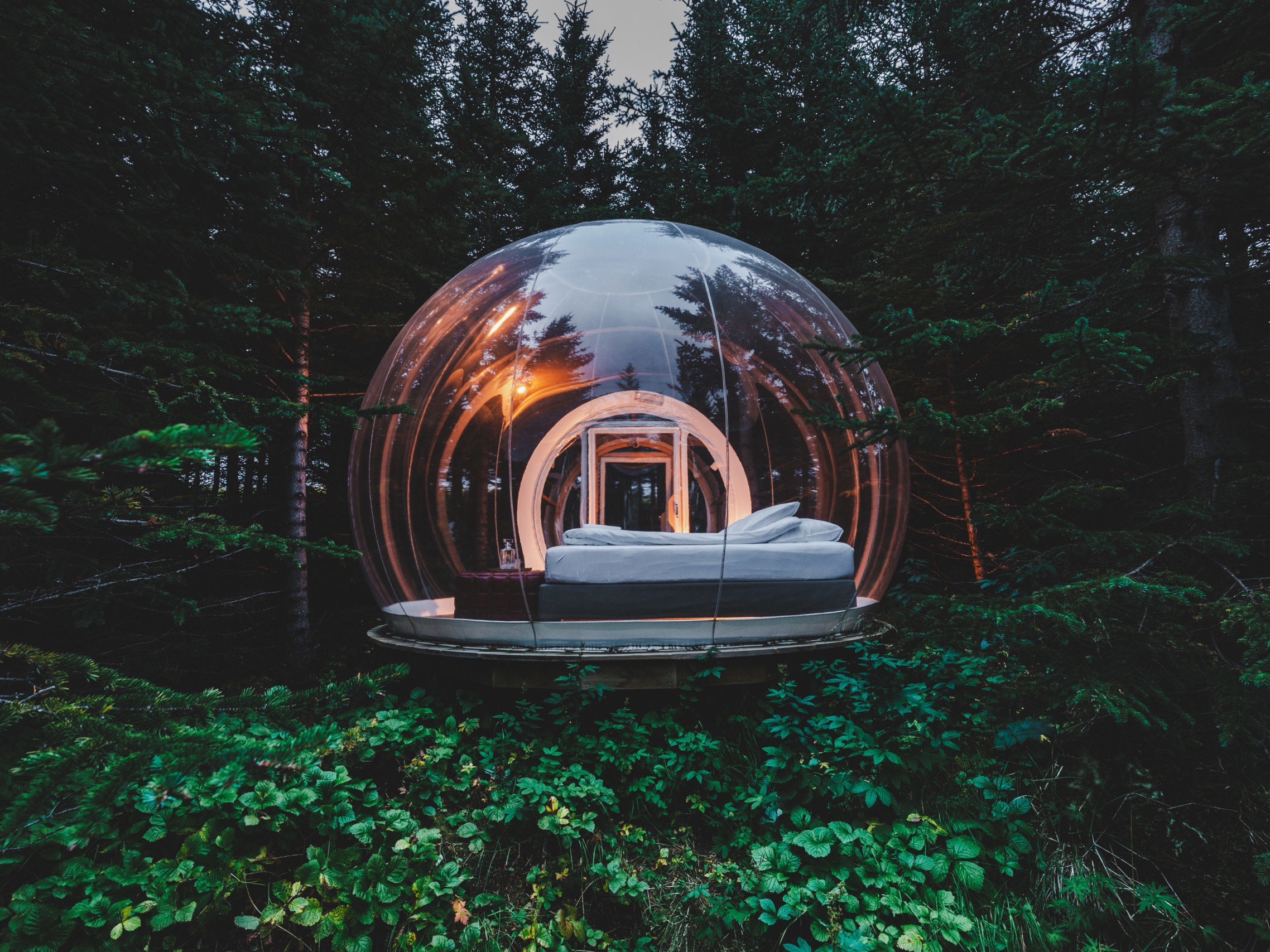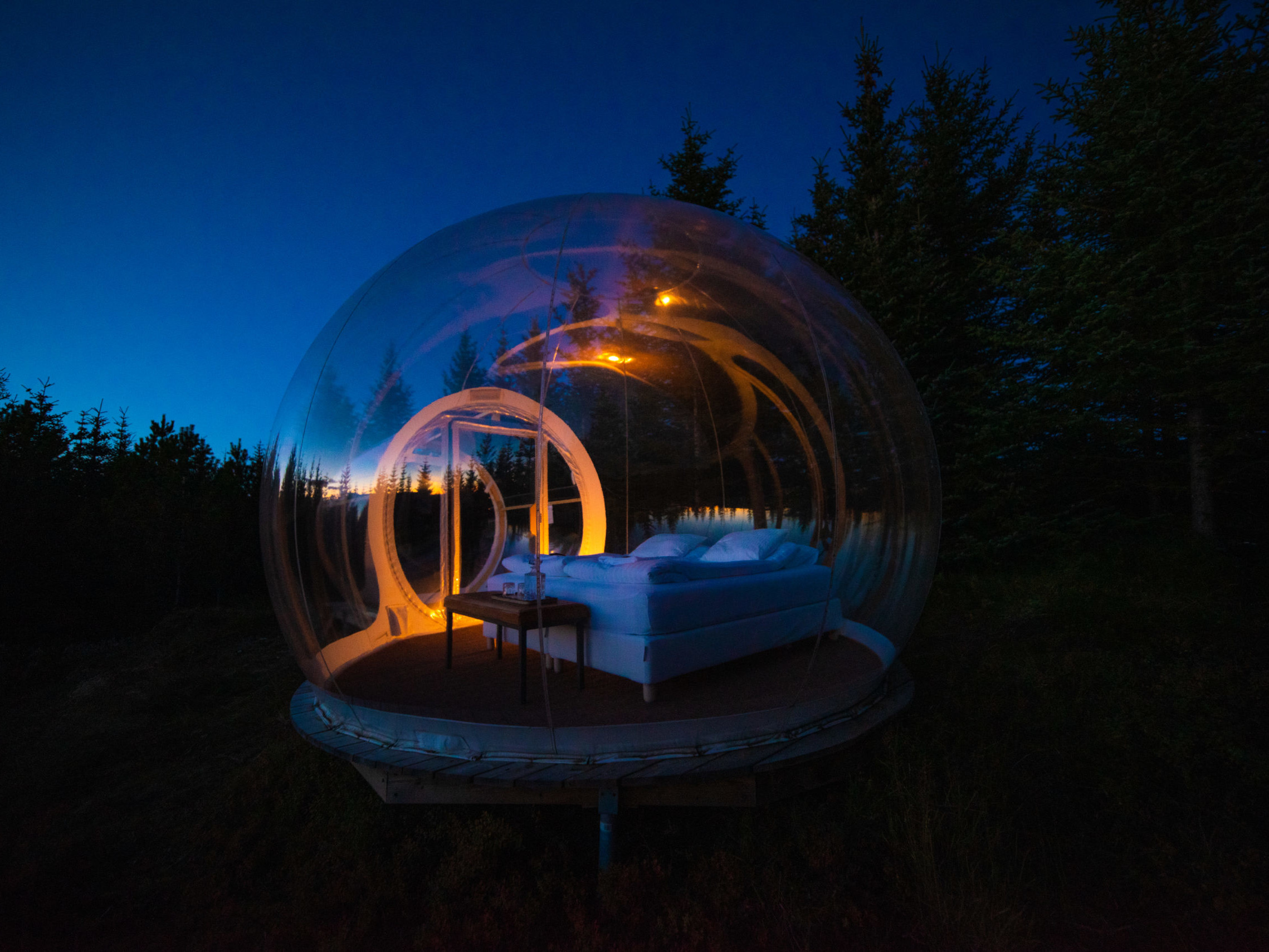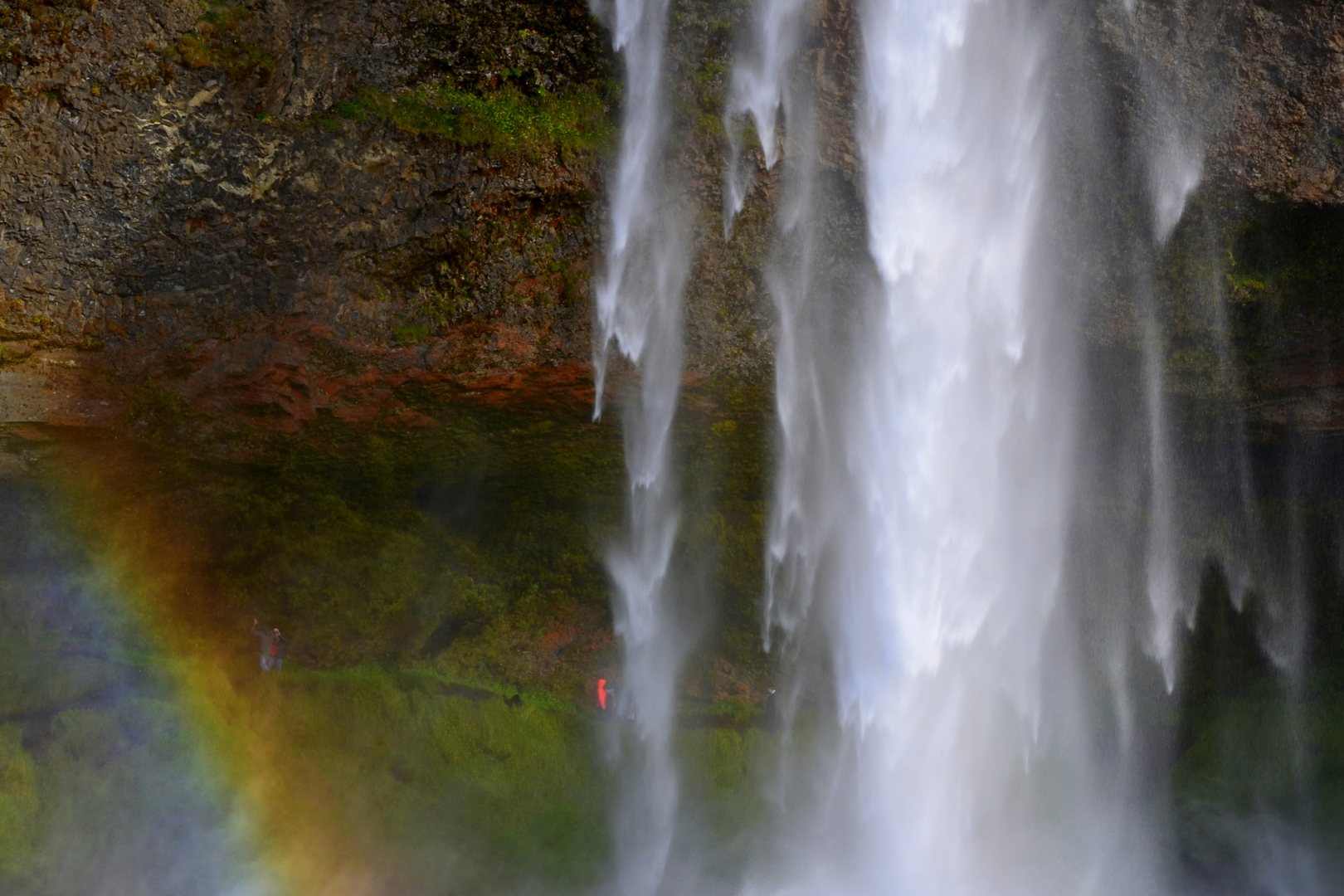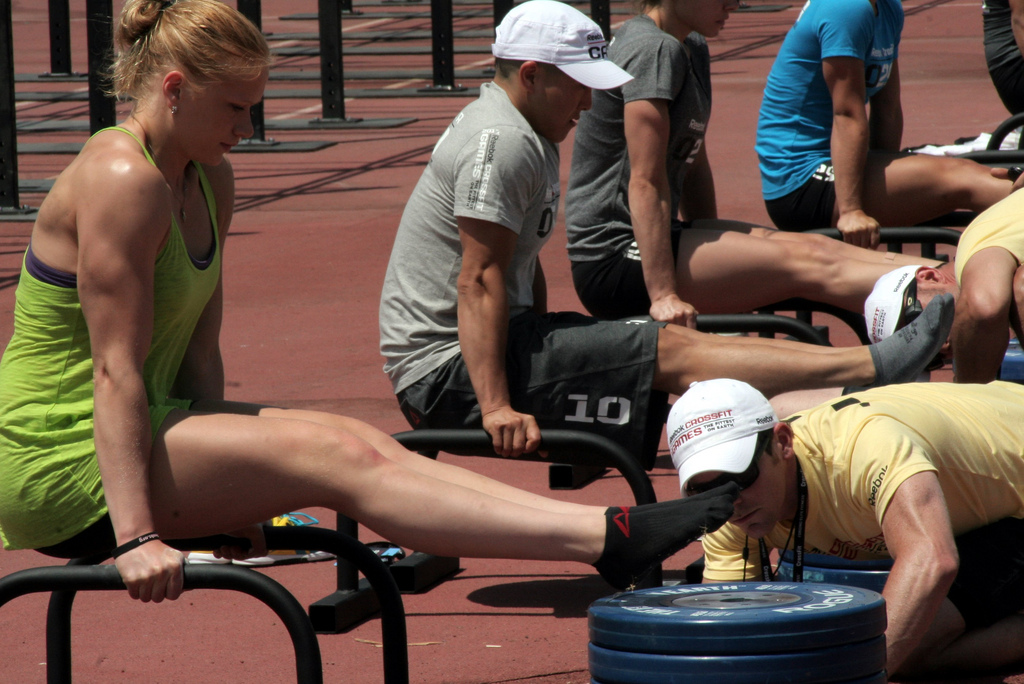Iceland Rye Bread Baked by the Bubbling Geysirs
Iceland Rye Bread Baked by the Bubbling Geysirs
Text by Sonia Nicolson
Working with the Land
Iceland offers an incredibly unique landscape of lava, moss, glaciers, volcanos and active land, with bubbling hot springs breaking through rifts in the earth. Its incredible to live alongside this magnificent natural force, fire and ice. The Icelanders relationship with the natural world goes beyond mere resilience but reaches into the realm of harmony. The Icelanders have made this island and its formidable elements work for them, you can see this in one rather unsuspecting source, the Icelandic Rye Bread.
Rye Bread, known in Icelandic as Rugbraud, is a delicious Icelandic bread traditionally baked in the ground. The ground is heated by bubbling Geysir bubbling in the pebbled sand of the Laugavautn shoreline.
Geyser, Geysir
The English word geyser, with refers to a periodically spouting hot spring, derives from Geysir. The name Geysir itself comes from the Icelandic Old Norse verb geysa, “to gush”. Eruptions at Geysir attracts visitors daily to watch the magnificent eruption of boiling water being hurled up to 70 metres in the air. However, the geysers used to bake this bread at Laugavautn are all underground and bubble away within the sand, no dramatic hurl of water but they’re very very hot.
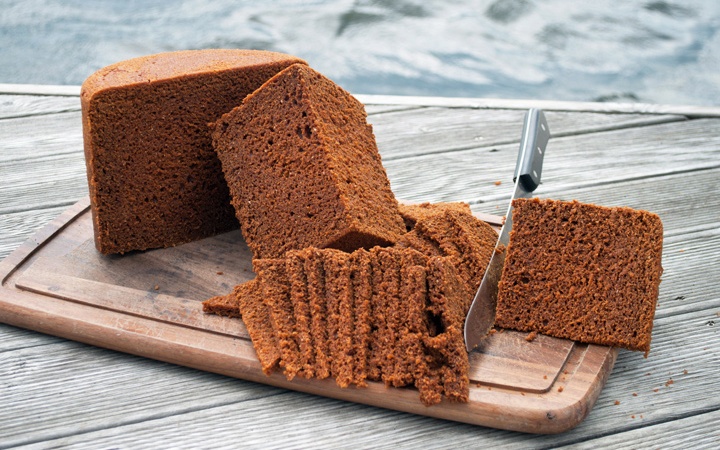
Photo by On The Luce
How to Bake Rye Bread
The recipe Icelanders use is typically handed down from generation to generation. Each families recipe is basically the same but some have adapted it and added a secret ingredient.
The standard recipe is as follows:
4 cups Rye Flour
2 cups Wheat Flour
2 cups Sugar
A pinch of Salt
4 tsp Baking Powder
1.2 litres Milk
Once the mixture is mixed together, bake it for 24 hours in an unconventional oven, i.e the ground heated by hot springs.
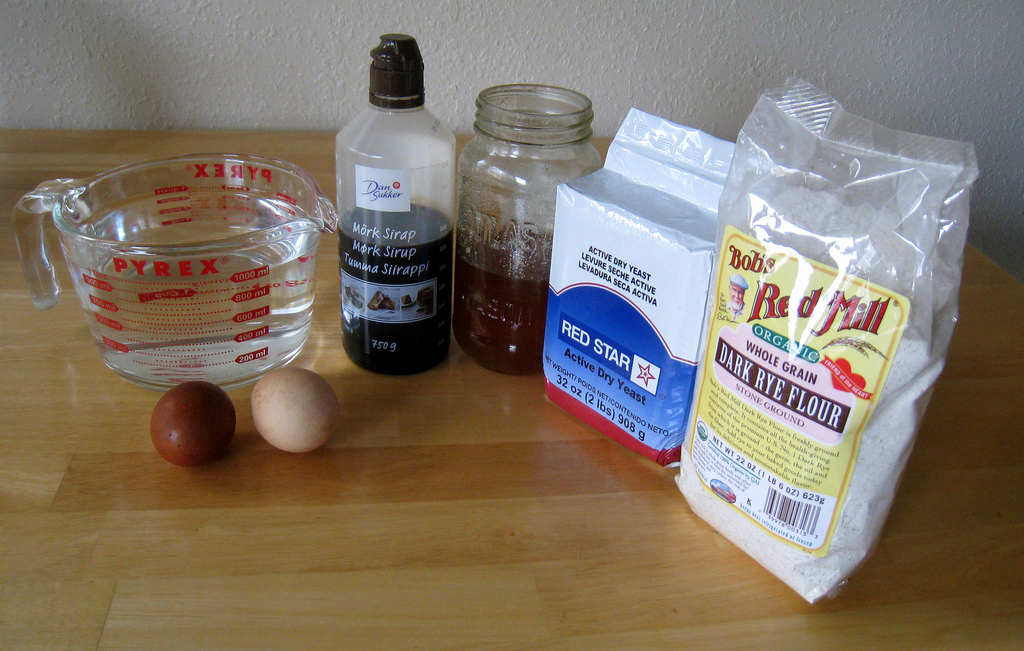
Photo by Dvortygirl
The Traditional Baking Method
A hole is dug in the ground about a foot deep. The ground starts to boil, the temperature is around 97’c when the bread goes in to bake. The bread is baked in a pot, submerged into the hot sand and covered over. A stone is placed on top to mark to locals where the bread is being baked. The entire process takes around 24 hours, then the bread is ready to be dug back up. After cooling it with water from the lake, the vessel is then opened to reveal a fully cooked loaf of Rye Bread.
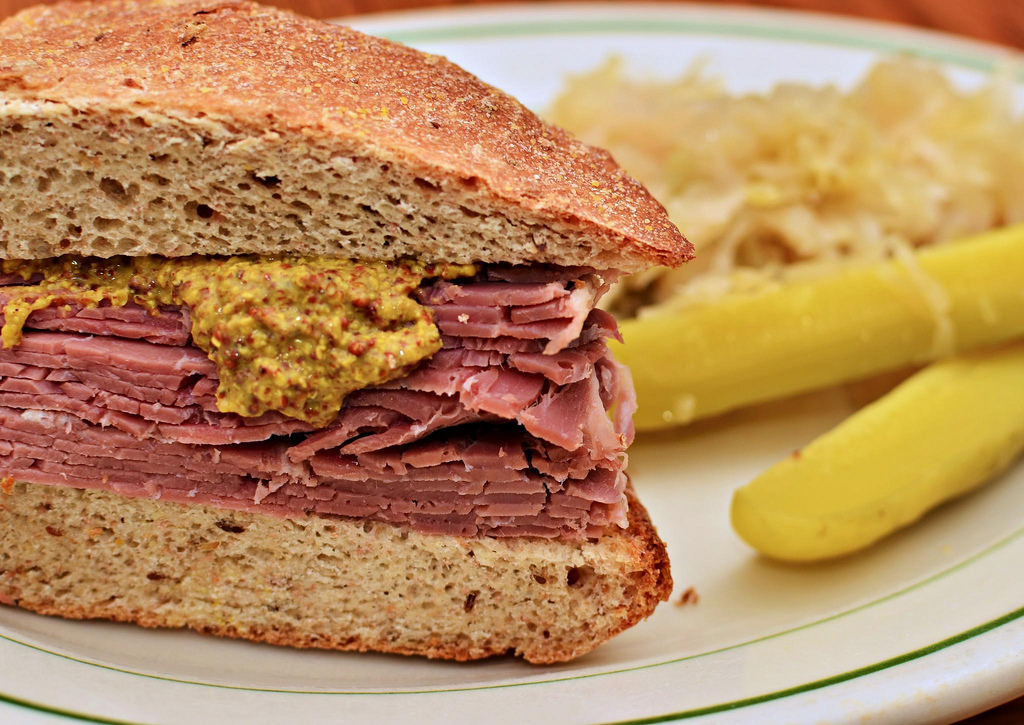
Photo by jeffreyw
How to Eat Rye Bread
When cooked in this particular way, Rye Bread is sometimes referred to as hverabraud, which translates as ‘hot spring bread’. Many locals bake Rye Bread this way and have been doing so for many generations. Unique to Iceland, Rye Bread is enjoyed with butter, topped with smoked salmon, smocked tout, herring and egg; delicious.
Fontana Geothermal Spa
Fontana geothermal Spa in Laugavautn, a small lakeside town on the Golden Circle, is run by Sigurður Rafn Hilmarsson who has become something of a national icon for his Icelandic Rye Bread. Hilmarsson has prepared bread for countless visitors, including the president. When asked what makes his bread so special, Hilmarsson modestly replied “it has a bit more sugar in it than most,” he said.
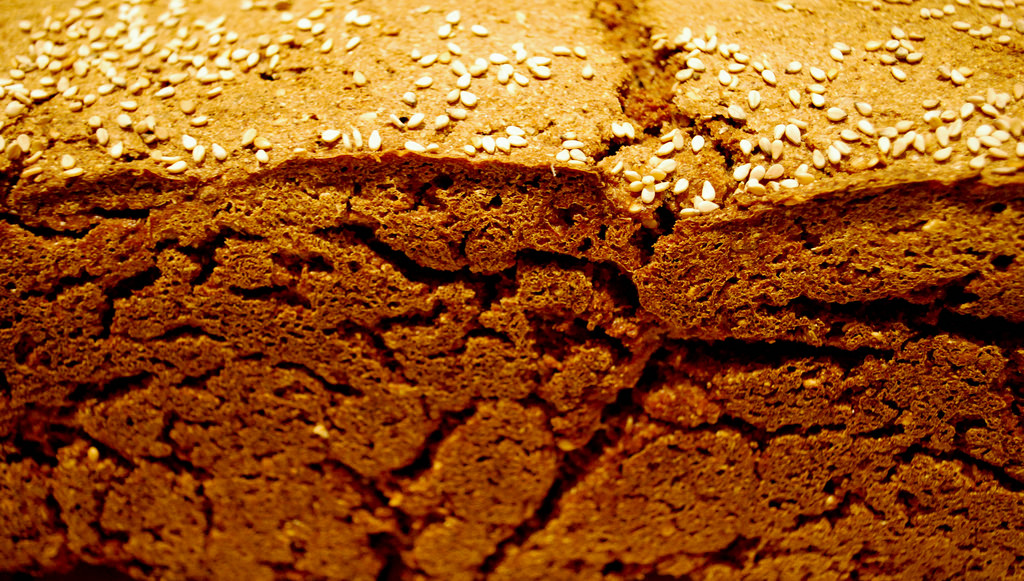
Photo by Katrine Thielke
Cake, not Bread
The sugar content in Rye Bread results in a taste and consistency more akin to that of cake but most would say that the most remarkable element of Rye Bread is in its traditional preparation. Unlike most breads, this Rye Bread is buried in a bubbling geothermal pit and baked underground.
Experience it For Yourself
Rye Bread is still a staple in todays Icelandic cuisine but many now use the simpler and more convenient baking method of an oven. Sigurður Rafn Hilmarsson remains true to his Icelandic families roots “this method was passed down from my grandmother to my mother to me,” he explained. “That’s the one we are using here.”
This is a daily practice for Hilmarsson at the Fontana geothermal Spa where you can experience a demonstration of this unique method first hand on the lakeshore.
Drilling into a Volcano to Find Clean Energy
Drilling into a volcano to find clean energy
Text by Sonia Nicolson
We live in a world fuelled by dirty fossil fuels but times are changing and we are on the edge of a world that gets its energy from renewable, clean sources. Although geothermal energy is generally considered to be a sustainable source, it is not entirely renewable. The potential renewable and clean energy source are:
Space Based Solar Power
Every hour, more energy reaches us on planet earth than we could use in an entire year. To save this energy, engineers are looking into giant solar farms in space that can collect the solar radiation, mirrors would reflect onto solar collectors and this energy would be beaten back to earth wirelessly. Obviously this project would require a huge budget but doesn’t it sound incredible.
Human Power
Human powered devices already exist, but scientists are working on harvested power generating from normal human movement. Tiny electronics on billions of people means big potential. The idea is that one day, for examples, your phone will be able to change as you are walking down the street or it moves in your hand or as your fingers move on the screen. You can also wear small systems that pass electricity as you move. Human power wont solve the issues of global warming but every bit counts.
Tidal Power
Harnessing the motion of the ocean could power the world a number of times over, which is why so many companies are trying to figure out how. There has been a lot of focus on wind and solar energy so the tidal potential has been a little less explore, until now. Tidal systems are becoming more efficient from hydroelectric turbines to the world first ever desalination plant off the coast of Australia which is producing clean drinking water.
Hydrogen
The element Hydrogen is very high in energy, an engine that burns pure hydrogen produced almost no pollution. Nasa powered its shuttles and part of the space station with Hydrogen for years. Hydrogen works in combination with other elements such as oxygen. In the 80’s, Russia tested a passenger jet to run on it and more recently, Boeing tried out some small planes fuelled by it. It is possible to put hydrogen into mobile fuel cells in vehicles and they can convert it into electricity. These cars are being manufactured already. Honda is working on a car that can be plugged in to power a house, instead of the current electric powered cars which take energy from the house. The main problems with development is of course cost and a lack of hydrogen stations to refuel.
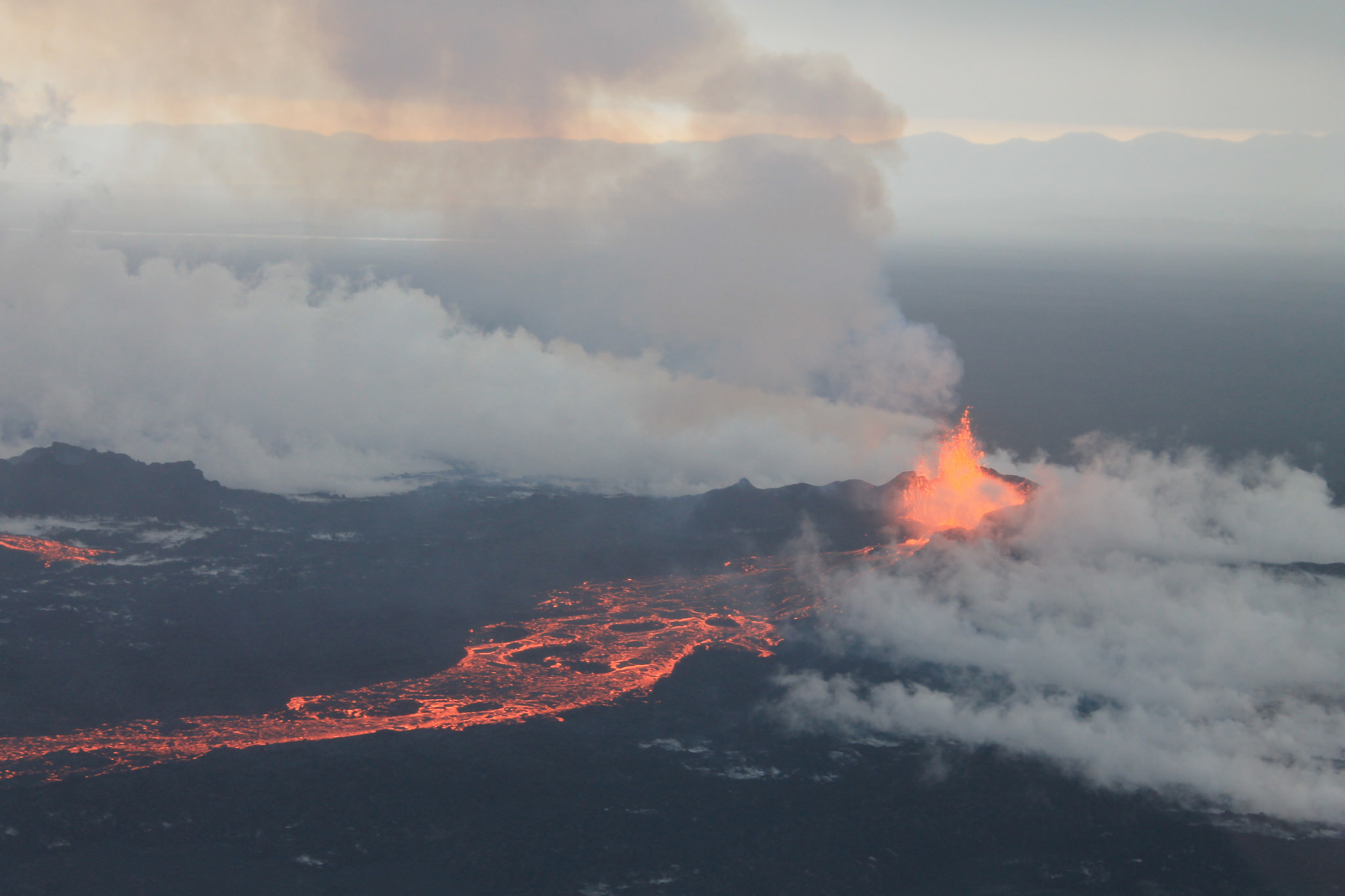
Photo by peterhartree
Geothermal Heat from Lava
Geothermal, the method of converting the heat that rises from the depths of the molten core of the earth into energy. Geothermal energy currently powers millions of homes around the world. 25% of Icelands energy comes from geothermal technology. The current project looking for clean energy in the volcanos magma has only been tried once before, in Hawaii.
Iceland, where ice and fire meet, has drilled into a volcano in an effort to bolster geothermal clean energy. The energy company HS Orka is leading this project on a site is near the famous Blue Lagoon spa, in the Reykjanes region. Engineers are drilling into the superheated rock until they reach magma deposits in the hope to produce up to 10 times more power than conventional geothermal wells. The drills bore a hole, almost 5000m deep, into the Reykjanes volcano. This volcanic well, with its high temperature and extreme pressure produces ‘supercritical’ steam. The temperature at the bottom of the borehole is expected to be 427’c (800’f) but the team pumped water down into the hole, which the scorching magma instantly vaporised to a record of 500’c (932’f). The hotter the steam, the more energy it generates. The steam then pushes a turbine which creates energy. The steam is neither gas nor liquid but it produces much more energy than either.
This highly pressurised steam should lead to a giant leap in the energy generating capabilities of geothermal technology around the world.
Iceland is the only country in the world with 100% renewable electricity. Geothermal sources provide Iceland with 25% of its total energy needs, and this record breaking project means that Iceland can harness volcanic heat to produce clean energy in a pioneering new project. It could provide Iceland with 10 times more energy than gas or oil extraction. Iceland has been pioneering in geothermal energy, with 85% of its energy supply derived from renewable sources.
Albert Albertsson, an engineer on the project, named ‘Thor’ after the Viking god “to supply electricity and hot water to a city like Reykjavik with 212,000 inhabitants, we would need 30-35 conventional high temperature wells, compared to only three or five supercritical wells.”
Nuclear Waste
Nuclear fission power plants are the traditional reactors and have been in use around the world for decades and provide countries like the USA with 20% of its electricity. However, this method is highly inefficient and actually adds to the nuclear waste. The current system uses light water technology which surrounds the fuel rods with water to slow the neutrons and allows for a sustained nuclear reaction. This however only allows for 5% of the uranium atoms in the rod are used up when the rod has to be removed and adds to the ever growing stock pile of highly radioactive uranium nuclear waste. There appears to be a more efficient way called a fast reactor where the rods are no longer submerged in water but in liquid sodium. This means 95% of the uranium is used, a huge increase from the inefficient 5%. This change in liquid submersion reduces the 77,000 ton waste. The biggest obstacle is the high cost of building new nuclear power plants and political stigma surrounding nuclear energy.
Solar Windows
With production and installs getting cheaper, solar power is taking off. Photovoltaics are popular in Europe with Germany being the leader in this green energy. Researchers at the Los Alamos National Laboratory in New Mexico mad a significant breakthrough in quantum dot solar cell technology. They have been developing highly efficient solar panels that can double as transparent windows. This means that every exposed window can now be converted into a mini power station.
Biofuels
The production of crop-derived ethanol and biodiesel has become a mainstream substitute or supplement to gasoline in cars. The discovery of vast amounts of cheap oil worldwide made the idea of Henry Ford’s Model T running on ethanol just an idea however renewable biofuels are making a strong come back. The main issue is that the currently dominant first generation of biofuels use the same land and resources as farming and growing food therefore driving up the cost of food, causing problems in the developing world. Algae has all the right ingredients to replace oil because its natural oil content is greater than 50% which means it can be easily extracted and processed. The remaining parts of the plant can be converted into electricity, natural gas, fertiliser to help grow even more algae chemical free. Algae grows quickly without the use of farm land or freshwater.
Flying Wind Farms
You may have already seen wind farms and turbines on the horizon but with the Bionic Air Turbine (BAT) floating above the ground, where winds are stronger and more consistent, we could soon be getting energy more efficiently. These flying wind turbines will soon replace the less efficient tower systems and could allow for the construction of offshore wind farms which are costly to build.
Fusion
Nuclear fusion doesn’t create deadly nuclear waste, unlike fission, because it fuses atoms together instead of splitting them apart. This means there is no threat of a runaway reaction that could potentially lead to a meltdown event. Easier said than done. Nobel Prize winning physicist described fusion as trying to put “the sun into a box. The idea is pretty. The problem is, we don’t k ow how to make the box.” Fusion reactions will produce materials that are volatile and hot that it will damage the reactor that created it. However, private companies and governments are spending billions on research to try and solve these problems. If these challenges can be solved, fusion could provide virtually limitless energy to power the world.

What do you think the future of energy is?
Icelandic Decomposing Algae Water Bottles
Icelandic Decomposing Algae Water Bottles, by Ari Jonsson
Text by Sonia Nicolson
Plastic Waste
We all contribute in one way or anther to the growing problem of plastic pollution. Think of the packing in your weekly shop, think of your garbage, think of the items you work with and replace in time; it’s hard to avoid a plastic.
Plastic pollution is the build up of plastic products in the environment that adversely affects wildlife, wildlife habitat and/or humans. Plastics that act as pollutants are categorised based on sizes into micro, meso or macro debris.
The main issue that we in society face is that plastic is an inexpensive and durable material which means it is used to high levels but the plastic we use is very slow to degrade. Plastic pollution can unfavourably affect lands, waterways and oceans which in turn effects living organisms, particularly marine animals. Problems such as entanglement, ingestion, exposure to chemicals an all cause issues in natures biological functions.
More than 5 million tonnes of plastic are consumed annually in the UK alone. An estimated 24% of this makes it into recycling systems, that leaves a remaining 3.8 million tonnes of waste which is destined for landfills. Plastic reduction efforts have occurred in some areas in attempts to reduce plastic consumption and pollution, and promote plastic recycling.
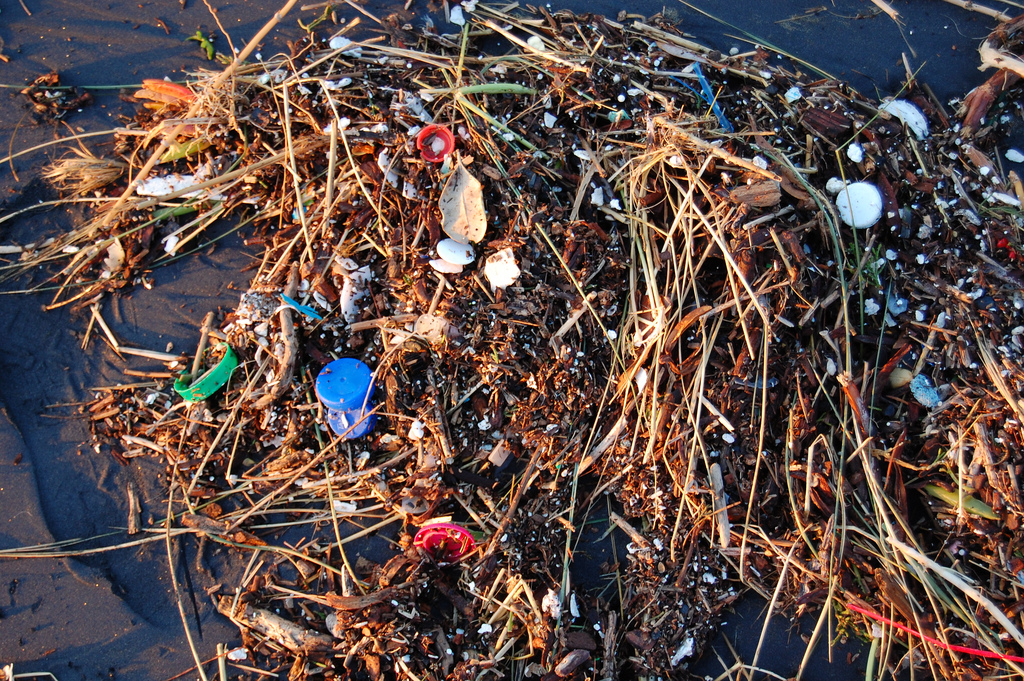
Photo by Kevin Krejci
Creating a Biodegradable Bottle
After reading about the amount of plastic waste produced daily, Ari Jónsson started to explore the concept of a replacement material.
“I read that 50 per cent of plastic is used once and then thrown away so I feel there is an urgent need to find ways to replace some of the unreal amount of plastic we make, use and throw away each day,” Jónsson told Dezeen.com
“Why are we using materials that take hundreds of years to break down in nature to drink from once and then throw away?”
What is DesignMarch?
DesignMarch is Iceland’s most important design festival and is held annually, from 10-13 March, this year will be the festivals 10th gathering. DesignMarch is organised by Iceland Design Centre and works to promote Icelandic design and architecture. It’s the largest and most significant design gathering in Iceland and brings together designers and Architects from all over. Located across Reykjavik, the most northerly capital city in the world, there are around one hundred different events from discussions and lectures to exhibitions and networking events. It transforms the city into one big venue for design where fashion and furniture, architecture and food design come together. The festival opens with DesignTalks, a day of lectures by internationally acclaimed designers and the foremost local design thinkers.
The festival showcases the best of local design alongside exciting international names, it’s a great chance for newcomers to display their work and be seen. Product Design student studying at the Iceland Academy of the Arts, Ari Jónsson, created a biodegradable bottle from a combination of red algae powder with water, and his work was exhibited during DesignMarch 2016. Jónsson’s decomposing bottles were presented at the Drifting Cycles student exhibition which was held inside a remote lighthouse.
Testing Materials
Ari began by studying the strengths and weaknesses of different materials to determine which materials would be best suited for use in the development of his water bottle. Working with natural materials and materials inspired by nature, Ari discovering a powdered form of agar, a substance made from algae. He found that when agar powder is added to water it forms a jelly-like material which can be formed into functional objects. He experimented with different promotions of water and algae to create a pliable formula. Then, slowly heating the substance, he poured it into frozen bottle shaped moulds to help him achieve the perfect form.
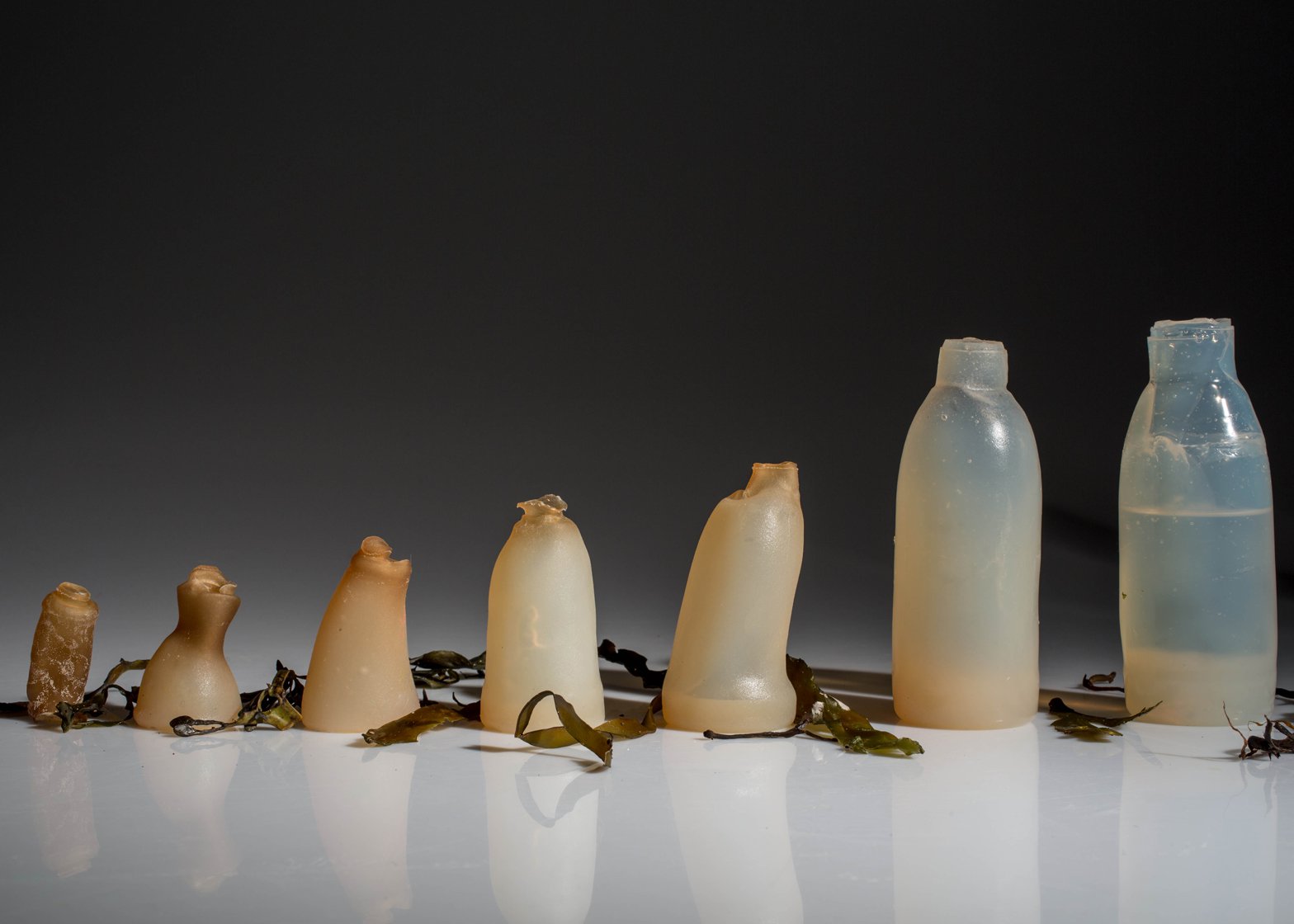
Photo by Youth Express
Working with Algae
As the material was in a liquid form, he needed to cool it to set the bottles shape and solid form. He found that rotating the mould whilst submerged in a bucket of ice cold water set the liquid substance making it take its bottle shape. The agar form was then refrigerated for a few minutes before it could be extracted from the mould.
“If it fails, or if the bottom is too thin or it has a hole in it, I can just reheat it and pour it into the mould again,” said Jónsson. So as he develops the perfect thickness and material use, he can adapt and remould as he works.
How it Decomposes
The interesting finding of this new material was that the bottle kept shape as long as the bottle is full of water. As soon as it was empty, it began to decompose and loose both its form and function.
As the bottle is made from algae, a 100% natural material, the water the bottle stores is completely safe to drink. As the bottle is made from powdered agar and mixed with water to create the material, Jónsson did note that after a while it may extract a small amount of taste from the bottle. This is not being seen as a negative aspect and the designer even suggested that if the user likes the taste, they can start to eat the bottle itself when they have finished drinking.
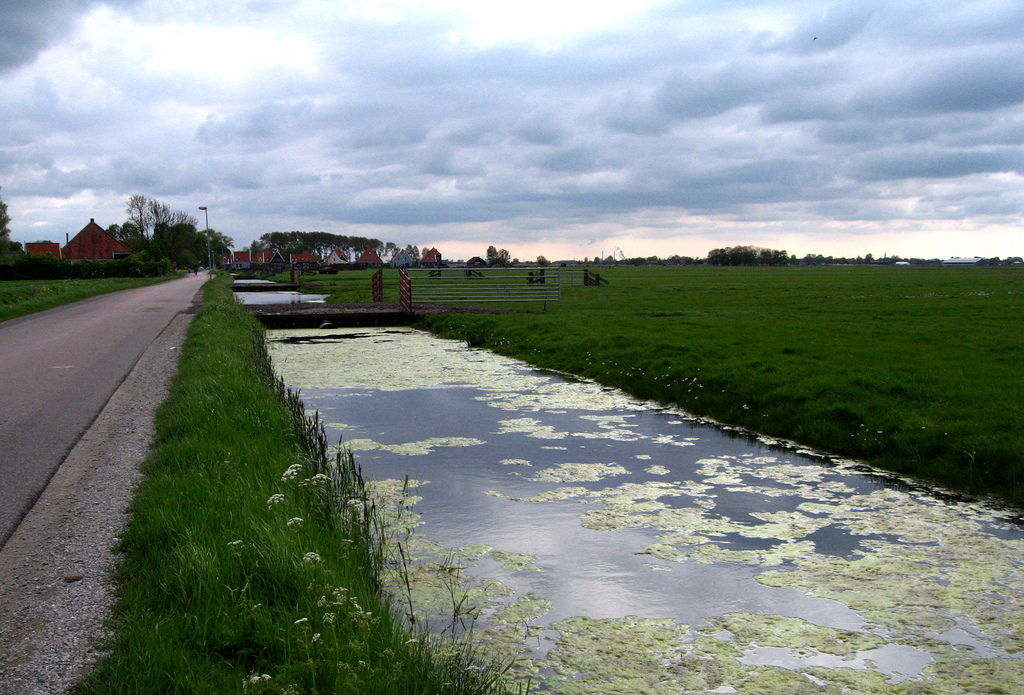
Photo by morisius cosmonaut
Inspired by Nature
Designers are increasingly experimenting with other forms of algae and seaweed. Arup revealed their design for the worlds first ever algae powered building, a Dutch designer has created bioplastic for 3D printing from algae, and the IKEA lab Space10 created an algae producing pavilion in Copenhagen. Seaweed has also recently been used in the development of furniture combining paper and seaweed to create a new material.
This is being explored in architecture too; the Modern Seaweed House on the Danish Island of Laeso uses seaweed in its exterior cladding. This project revisits the tradition of constructing using locally found materials such as seaweed. At one stage on Laeso, there were many homes constructed using seaweed as trees were scares. Nowadays only twenty houses like this remains so this inspired Vandkensten studio and non-profit Realdania Byg’s preservation project.
Algae has even been implemented as an energy source to power buildings.
Top 10 Waterfalls of Iceland
Top 10 Waterfalls of Iceland
Text by Sonia Nicolson
When in Iceland, we say DO go chasing waterfalls. There are some incredibly beautiful waterfalls in very dramatic surroundings and a lot of them are easily accessible. From the Golden Circle to the South Coast and further up north, you don’t have to go far to experience one. The Icelandic waterfalls are very dramatic and you can see water drop from a great height, gush through lava rocks, over ledges meaning you can walk behind them and certainly see a rainbow or two.
So here are our top 10 waterfalls in Iceland here to help you plan out your trip.
Gullfoss
On the Golden Circle you will find Gullfoss, meaning Golden Falls, is located on the Hvítá River and is one of Iceland’s most iconic waterfalls. The glacier water from Langjökull cascades 32m down in two stages. It’s a dramatic display of power and is incredibly beautiful to watch. The waterfalls power does spray up a lot of moisture into the atmosphere so make sure to wear waterproofs. Access the viewing platforms from the lower car park for the most accessible view, the top car park also has a cafe and shop. Great tour to see Gullfoss is the Golden Circle, Secret Lagoon and Bubble tour.
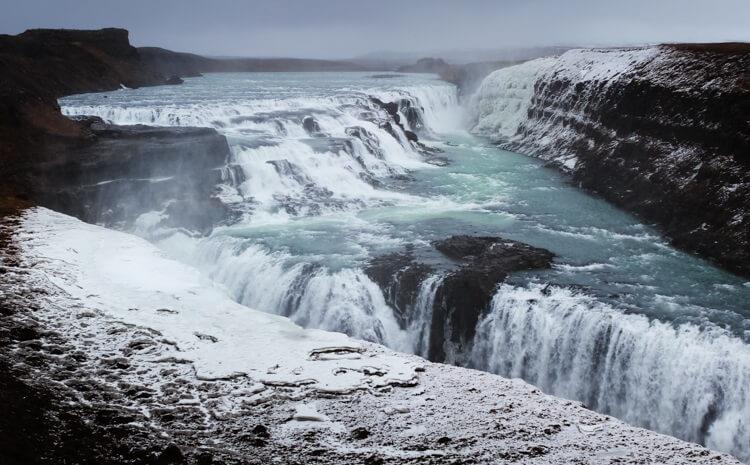
Seljalandsfoss
On the South Coast of Iceland you will discover the picturesque Seljalandsfoss. One of the more famous waterfalls in the country, Seljalandsfoss is Iceland’s highest waterfalls, at 63m. Make your way up the steep staircase to get a unique chance to walk behind a waterfall, a very unique experience. Feel the power as the water drops from the famous glacier, Eyjafjallajokull. Slightly further along the mountainside is Gljúfrabúi, a hidden waterfall which is often overlooked by the large tour groups, and so you might get it to yourself.
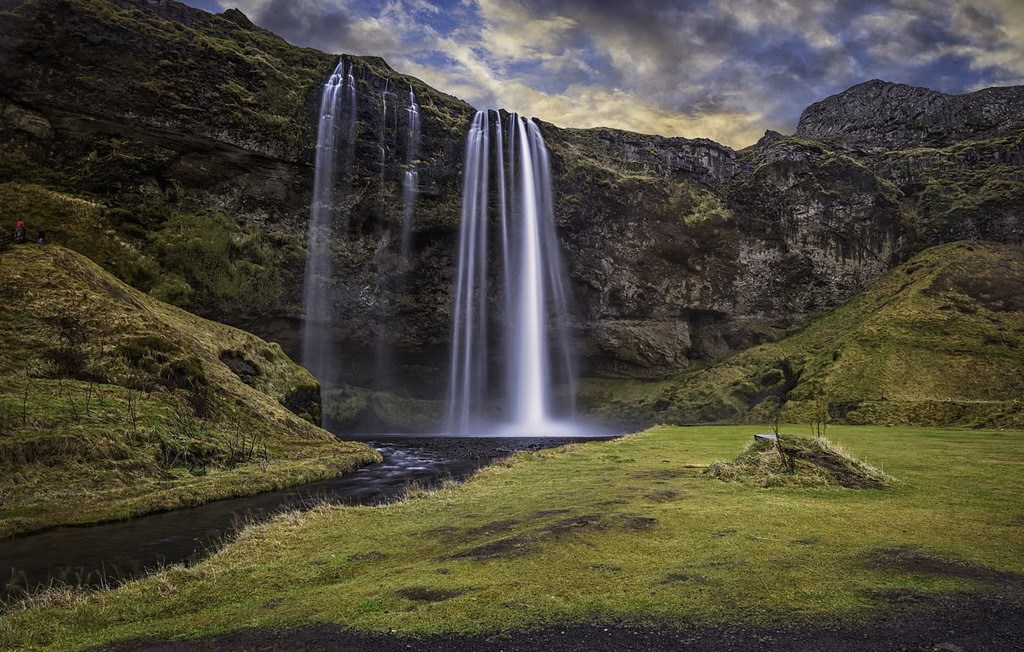
Photo by Ævar Guðmundsson
Skogafoss
Further on along the South Coast and the next waterfall is Skógafoss. Measuring around 25m across, with a drop of 60m, Skogafoss is Iceland’s biggest and most beautiful waterfalls. You can walk right up to the falls and be hit by the spray. If you are lucky enough to be visiting on a sunny day then you might spot a rainbows in the spray from the powerful cascade. If you have the time, climb the 60m of stairs to the top of the falls.
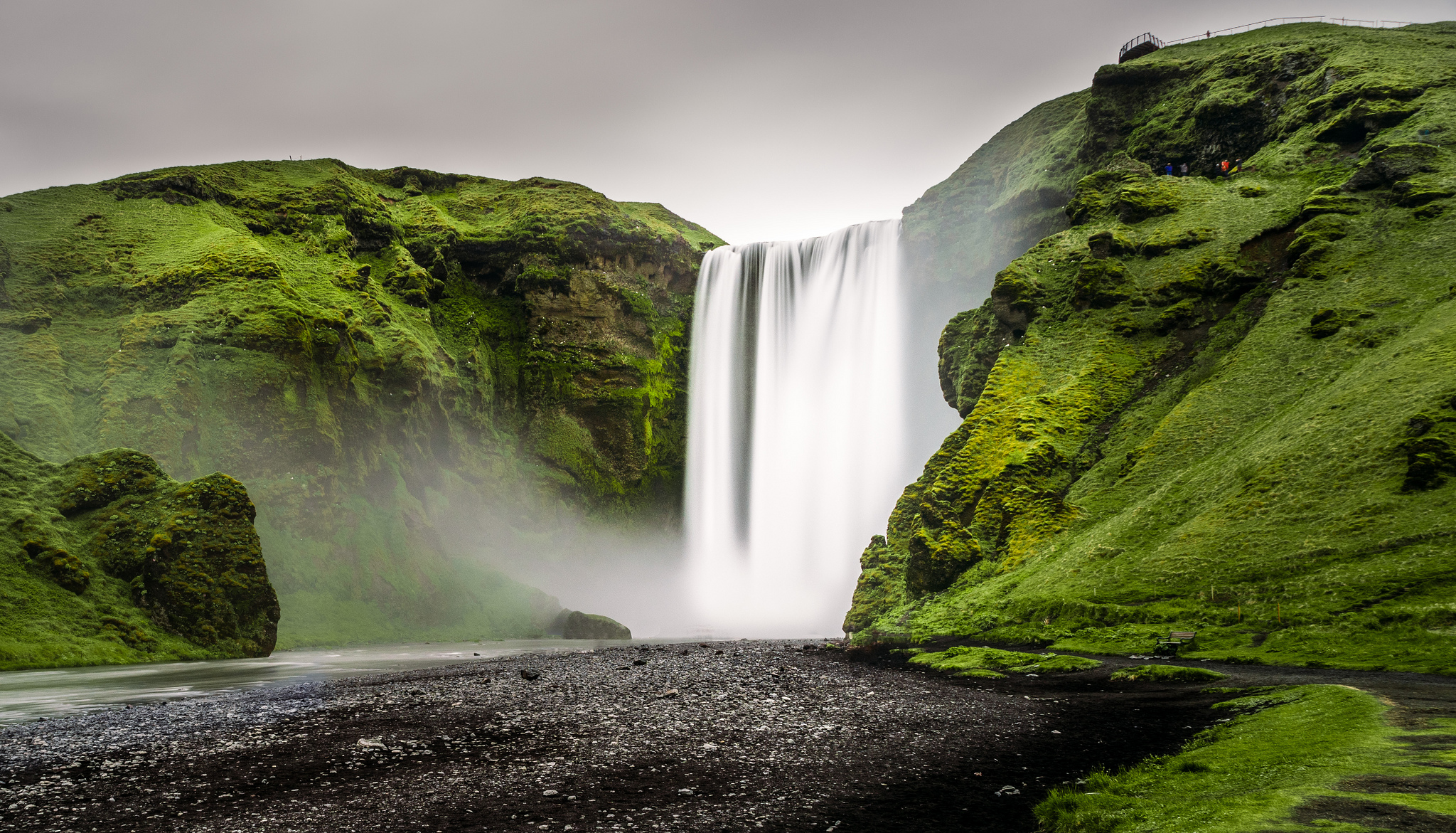
Photo by Mitchel Jones
Dettifoss
Located in the Vatnajökull National Park in Northeast Iceland and said to be the most powerful waterfall in Europe, Dettifoss flows from the glacier Vatnajökull, with an average waterflow of 193m3 per second. Dettifoss measures 100m wide with a powerful drop of 45m down into Jökulsárgljúfur canyon. Dettifoss is Icelands largest waterfall in terms of volume discharge, having an average water flow of 193 m3/s.
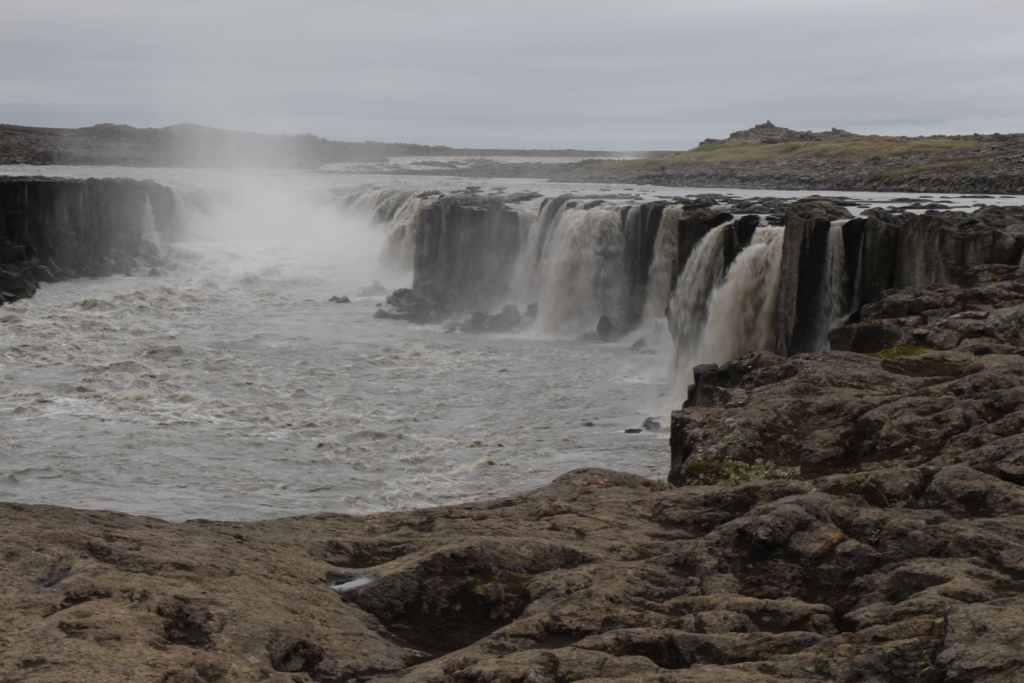
Photo by carlabits
Godafoss
Located on the River Skjálfandafljót in the North of Iceland, Godafoss waterfall is the fourth largest river in Iceland. A spectacular waterfall with a width of 30m, falling from a height of 12m, it truly is dramatic. Godafoss means Waterfall of The Gods. It’s said that when Christianity was declared the official religion in Iceland, by lawspeaker Þorgeir Ljósvetningagoði, he threw the statues of the old Norse gods into the waterfall. The river, originating deep in the Icelandic highland, runs from the highlands through the Bárðardalur Valley from Sprengisandur in the Highlands.
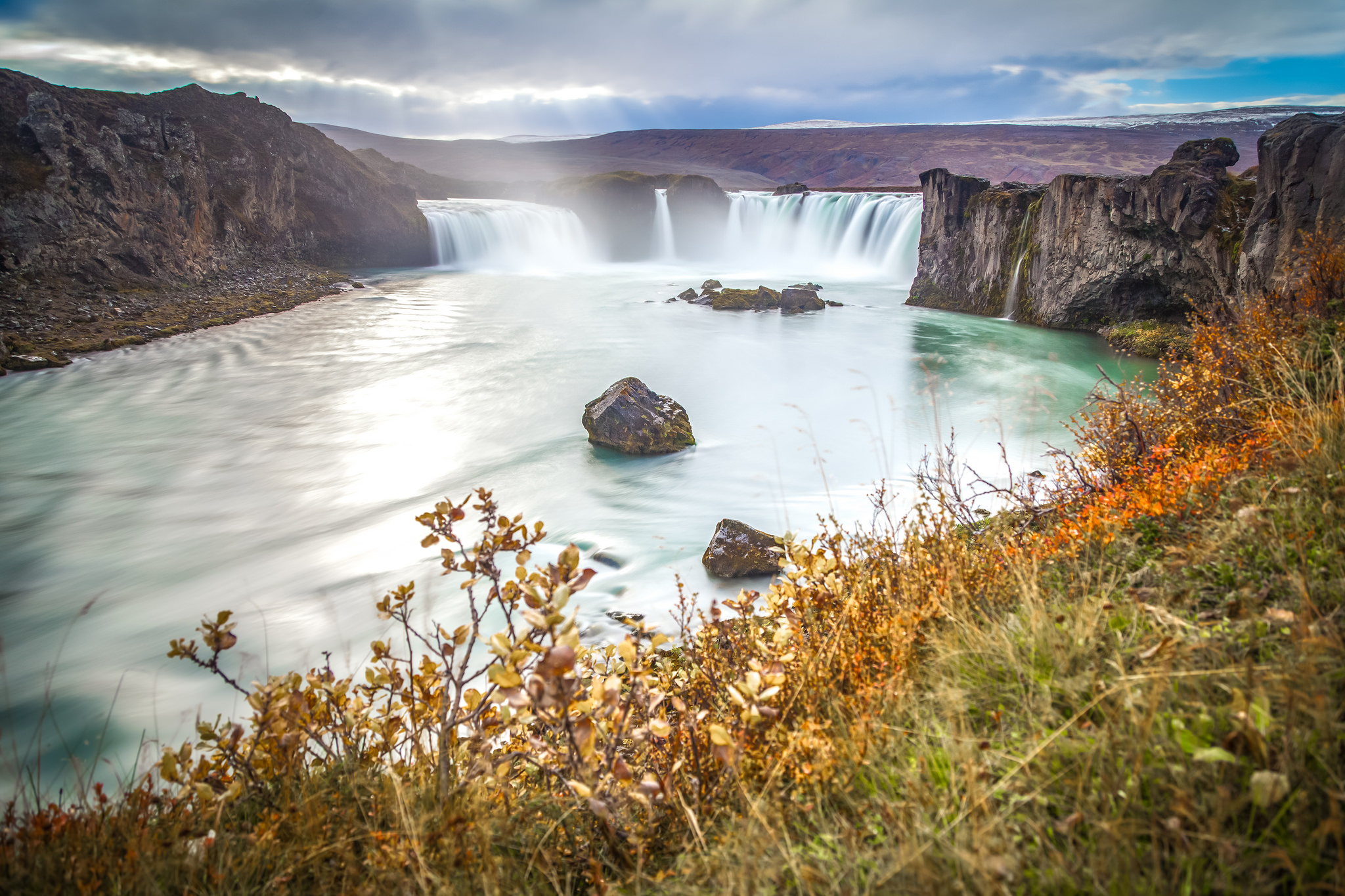
Photo by Andrés Nieto Porras
Svartifoss
Svartifoss, as know as the Black Falls as it is surrounded by dark lava columns. Located in Skaftafell in Vatnajökull National Park on the South Coast of Iceland. Similar natural formations can be seen throughout Iceland and abroad, at the Giant’s Causeway in Northern Ireland and on the Scottish island of Staffa. These basalt columns give inspiration to many buildings in Iceland such as Hallgrímskirkja church. in Reykjavík.
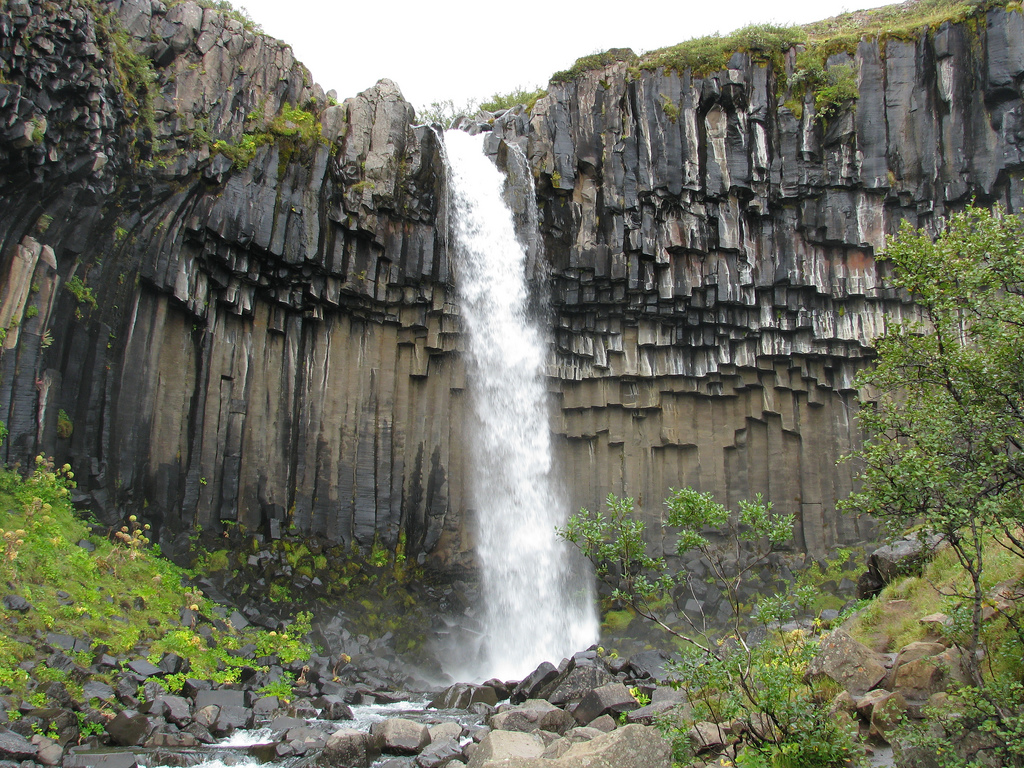
Photo by Victor Montol
Hraunfossar
Located in the district of Borgarfjordur, Hraunfossar is a series of beautiful waterfalls formed by rivulets streaming from a short distance out of the Hallmundarhraun lava field. This lava field was formed from an eruption of one of the volcanoes lying under the glacier Langjokull. Some of the most magnificent falls found in Iceland, catch them in the summer or as the colours turn in autumn.
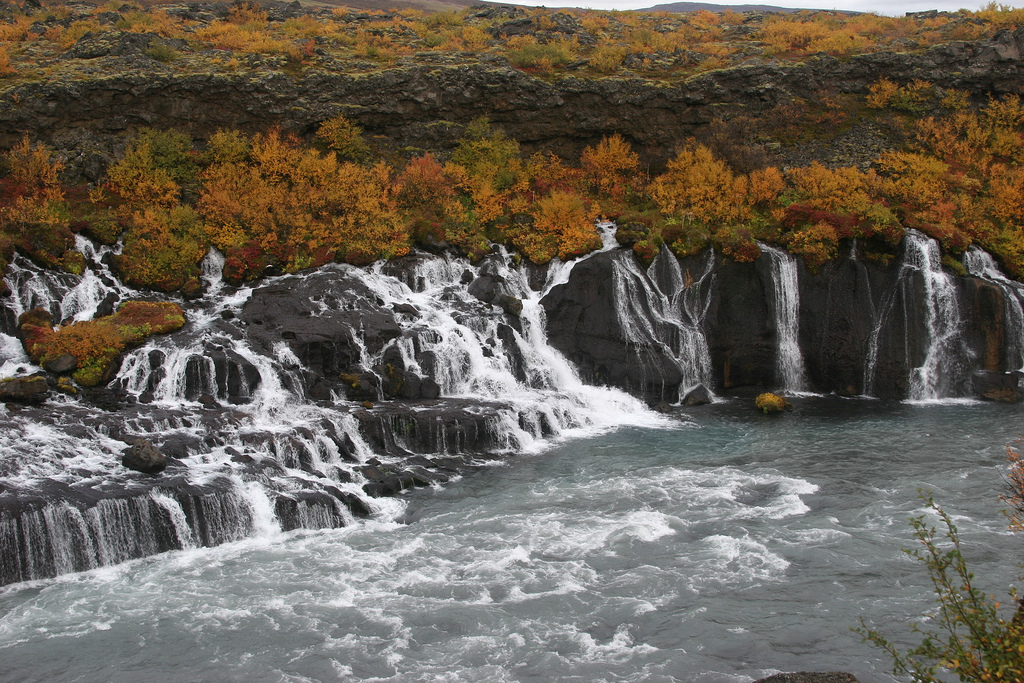
Photo by Jun
Haifoss
Háifoss is located near the volcano Hekla on the South Coast of Iceland. The third highest waterfall in Iceland, the water falls from a height of 122m streaming from the River Fossá. There is a car park above the waterfall. You can hike to the waterfall along the River Fossá from the historical farm Þjóðveldisbærinn Stöng. The farm was destroyed by a volcanic eruption of Hekla in the Middle Ages abut has since been reconstructed. The hike both directions will take you around 5-6hours.
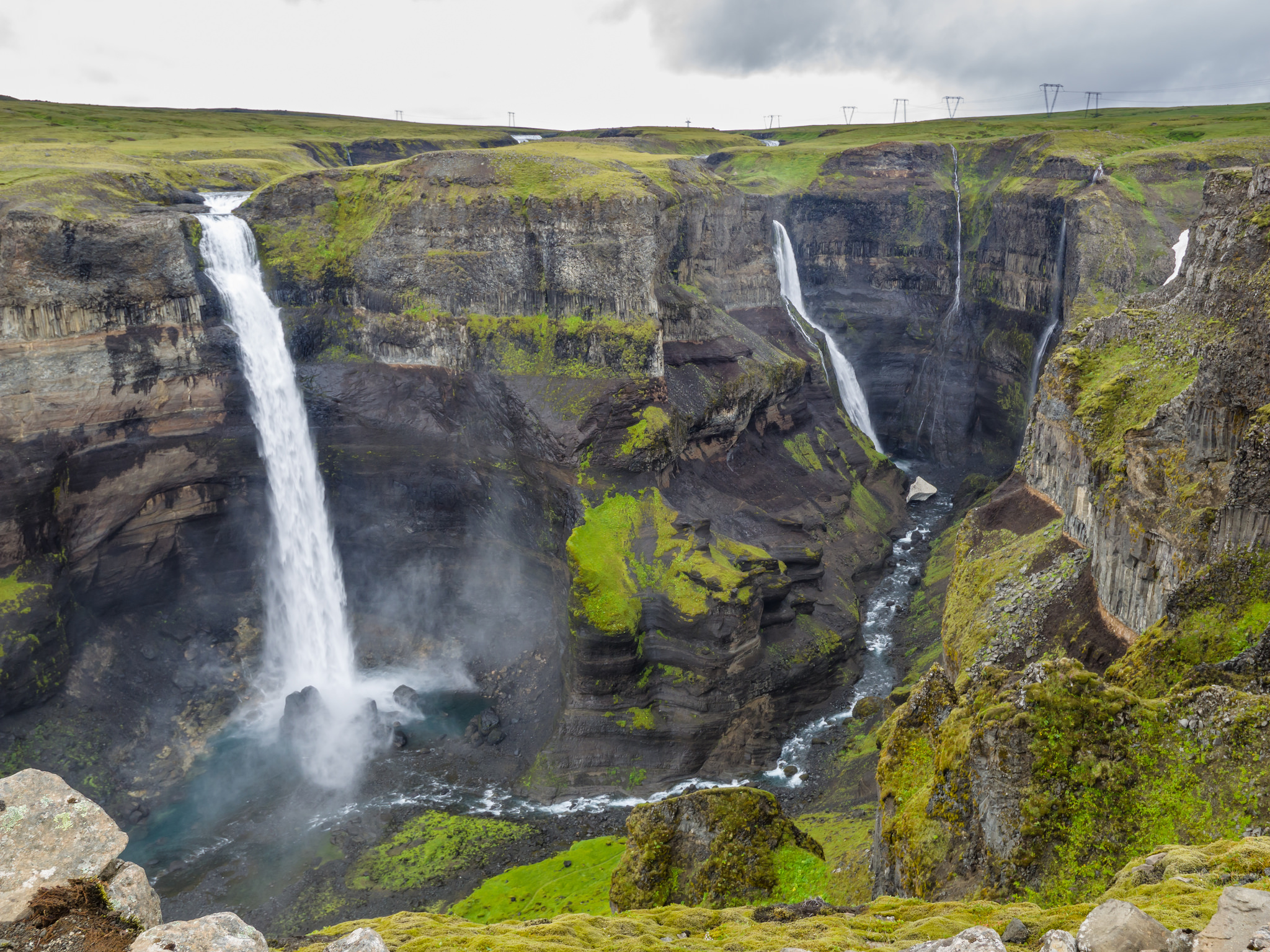
Photo by James Petts
Barnafossar
Barnafoss, also known as Bjarnafoss, is located near Hraunfossar and burst out of Hallmundarhraun, a huge lava plain in the west of Iceland and about 100 kilometres (62 miles) from Reykjavík. Barnafoss is on the River Hvítá and flows out of a lava field, creating a dramatic and very picturesque scene.
Barnafoss has been associated with many Icelandic folk tales, most famously the one about two boys from the nearby farm of Hraunsás. One day, the boys’ parents went to church with their ploughmen, the boys were supposed to stay at home but as they decided to follow their parents as they had gotten bored. Making a shortcut across the stone bridge over the waterfall, they suddenly felt dizzy and fell. The boys sadly drowned and when the news reached their mother, she put a spell on the bridge saying that nobody would ever cross it without drowning again. The bridge was demolished in an earthquake sometime after this.
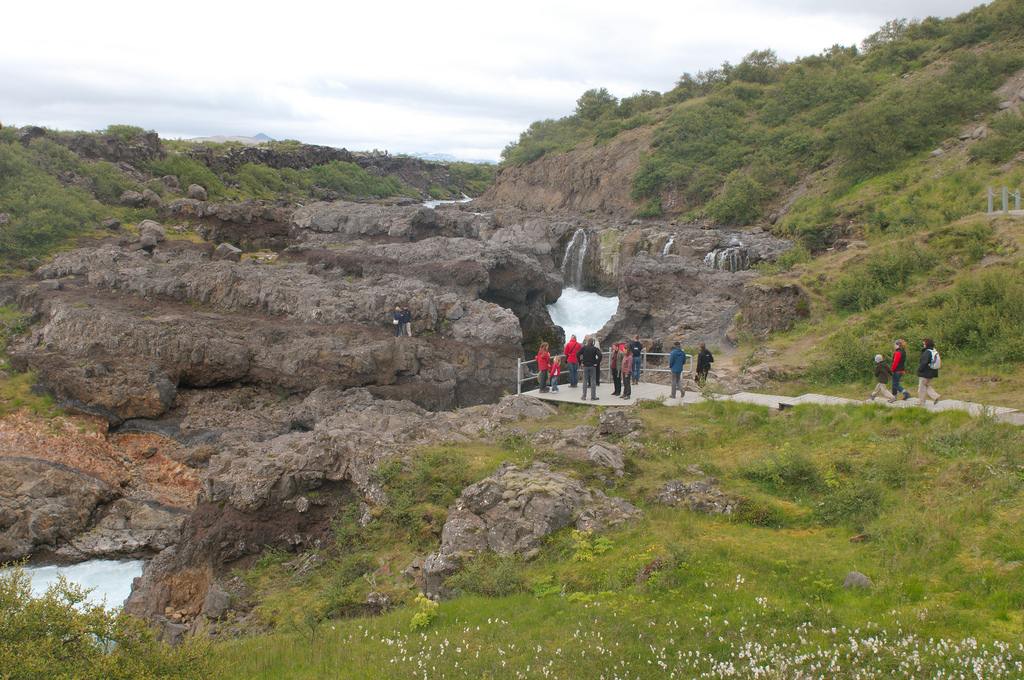
Photo by fr.zil
Faxi
Faxi, or the Vatnsleysufoss waterfall, is located on the Tungufljót River on the popular tourist route to the east of Reykjavik, the Golden Circle. Find Faxi around 12 kilometres from Geysir and Gullfoss, and 8 kilometres from Skalholt. Park up and walk away from the main road on a gravel track where there is a picnic area and small car park. The waterfall is a popular fishing spot as it is full of salmon. Please note that Kayaking in the waterfall is forbidden.
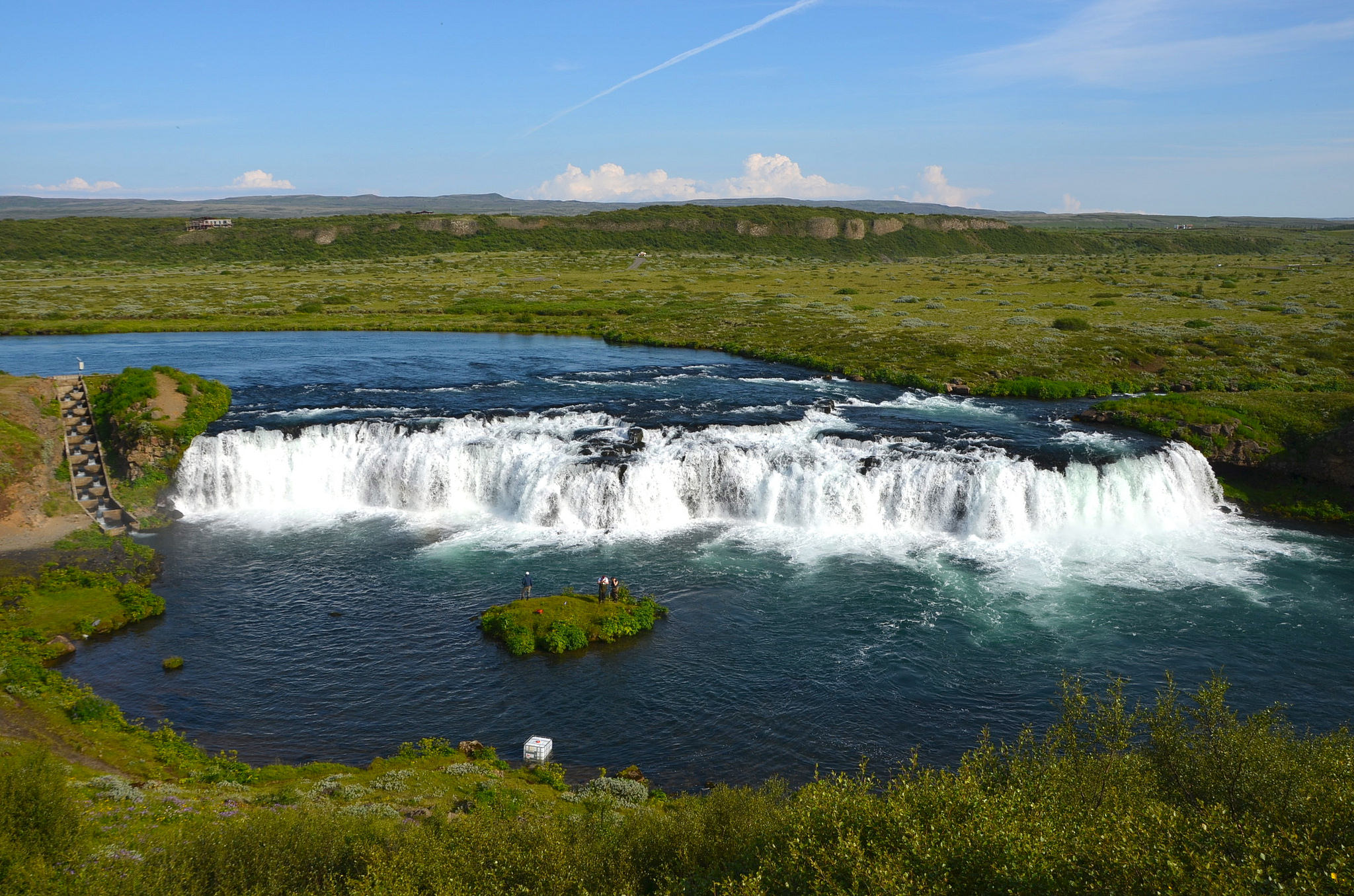
Photo by Adam Fagen
Which waterfalls are on your bucket list?
The Icelandic Turf House
The Icelandic Turf House
Text by Sonia Nicolson
Icelandic turf houses, “torfbaeir” and sometimes referred to as ‘hobbit homes’, were the built to withstand the brutal Icelandic climate, survive earthquakes and use zero energy. They offered superior insulation compared and good ventilation compared to the more modern wooden or stone constructions.
When the Vikings settled in Iceland they forested around 30% of the trees, clearing land and leaving a devastating mark on the natural landscape. Iceland had a large amount of turf suitable for construction and as many settlers were used to the idea of turf roofs from their time in Norway, this was an obvious building material. The turf house is now one of the more iconic buildings in Iceland.
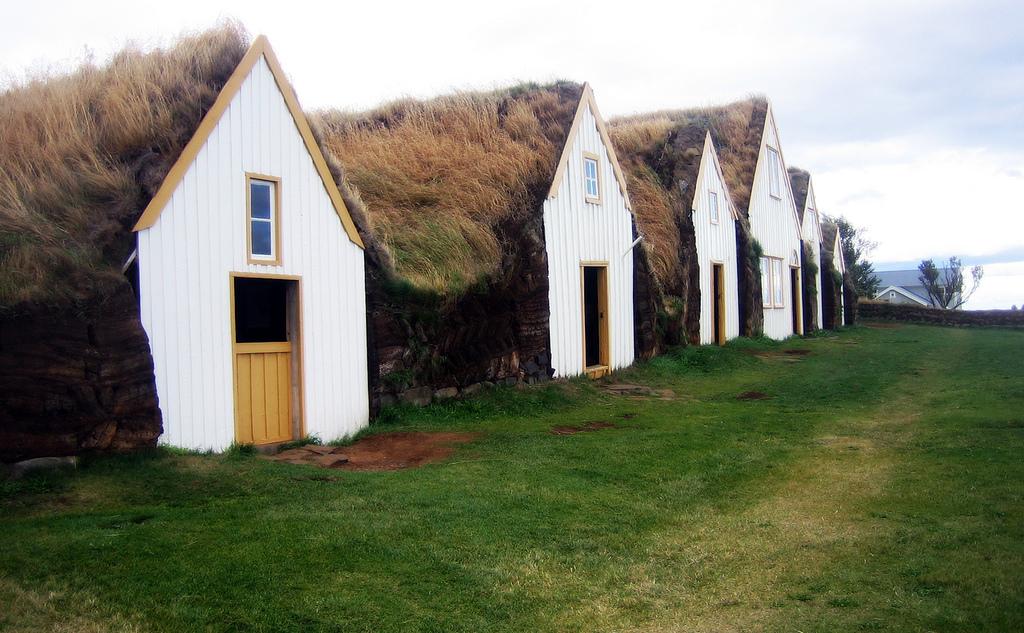
Photo by Matito
The oldest turf house in Iceland is the historical farm of Keldur on the South Coast of Iceland. A typical Icelandic turf farm was a cluster of buildings connected by earth corridors. Keldur is one of very few preserved turf houses in South Iceland, along with the f.ex. the turf house at Austur-Meðalholt, now a museum, and the reconstructed houses of Skógar museum.
Keldur farm is a historical place of important for Iceland Saga of Njáll, Ingjaldur Höskuldsson, who lived here from 974 until around 1000. In the 12th and 13th century, Keldur was one of the manors of the most powerful clans in Iceland; the Oddi clan. Jón Loftsson, one of the most powerful chieftains in Iceland in the 12th century, and lived at Keldur until his death in 1197. The turf houses here have been rebuilt many times, reconstructed after both earthquakes in 1896 and 1912. In addition, the ruins of around 18 farmsteads have also been found on this site. Close to Keldur is the well known volcano Hekla, erupting on average every 50 years. Lava rocks from eruptions were used as building materials for the farmstead and driftwood was also used.
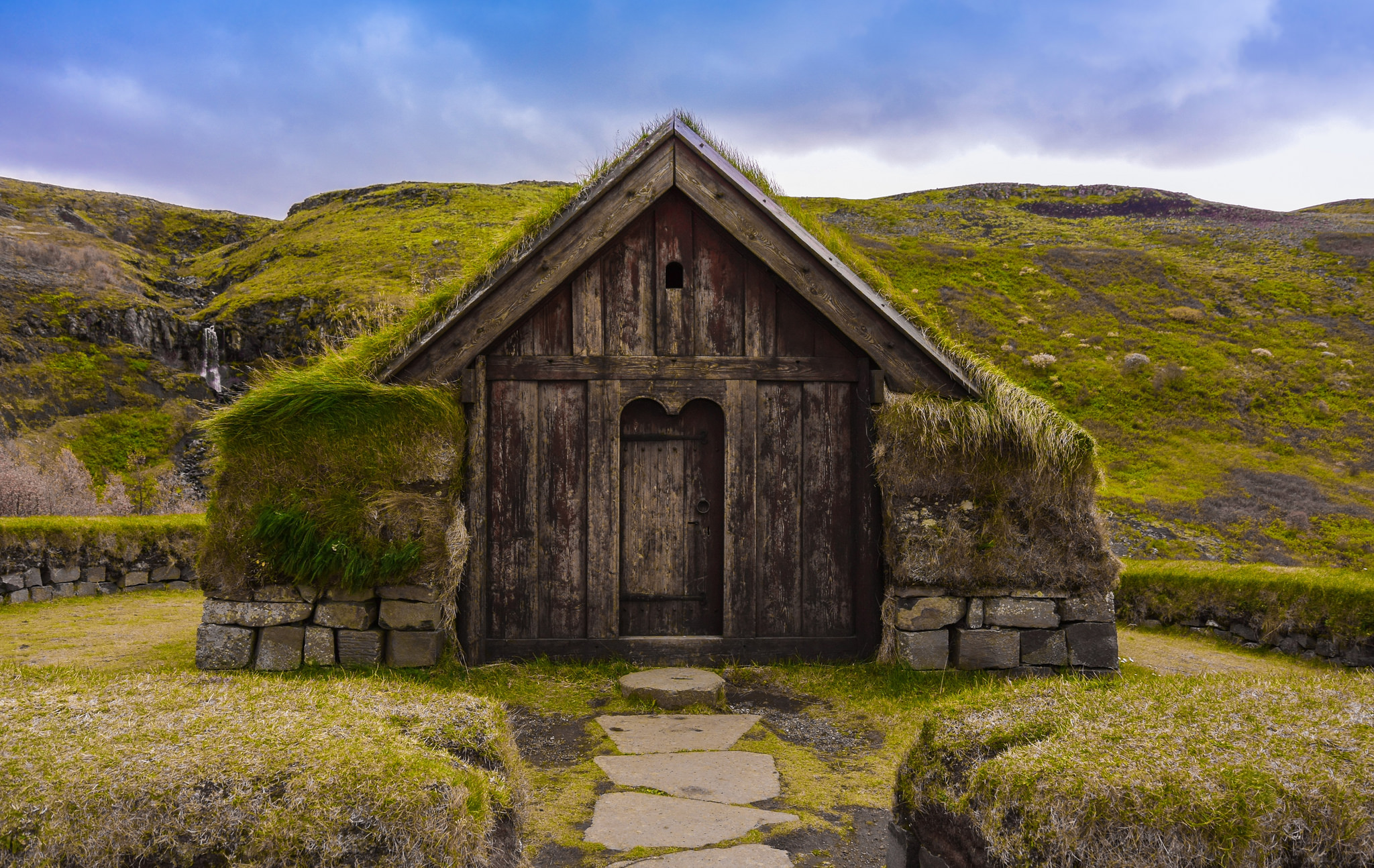
Photo by PIVISO
In 1942, The National Museum of Iceland bought the old turf farm and farmhouse as part of the National Museums Historic Buildings Collection. The site is open to visitors from June – August.
The turf houses were all of the same proportions, regardless of class, social status or wealth. They were representative of a communal way of living in Iceland. All members of the family lived and spent their time together in the living room, the only room with a window, where they ate, slept, were born, and died.
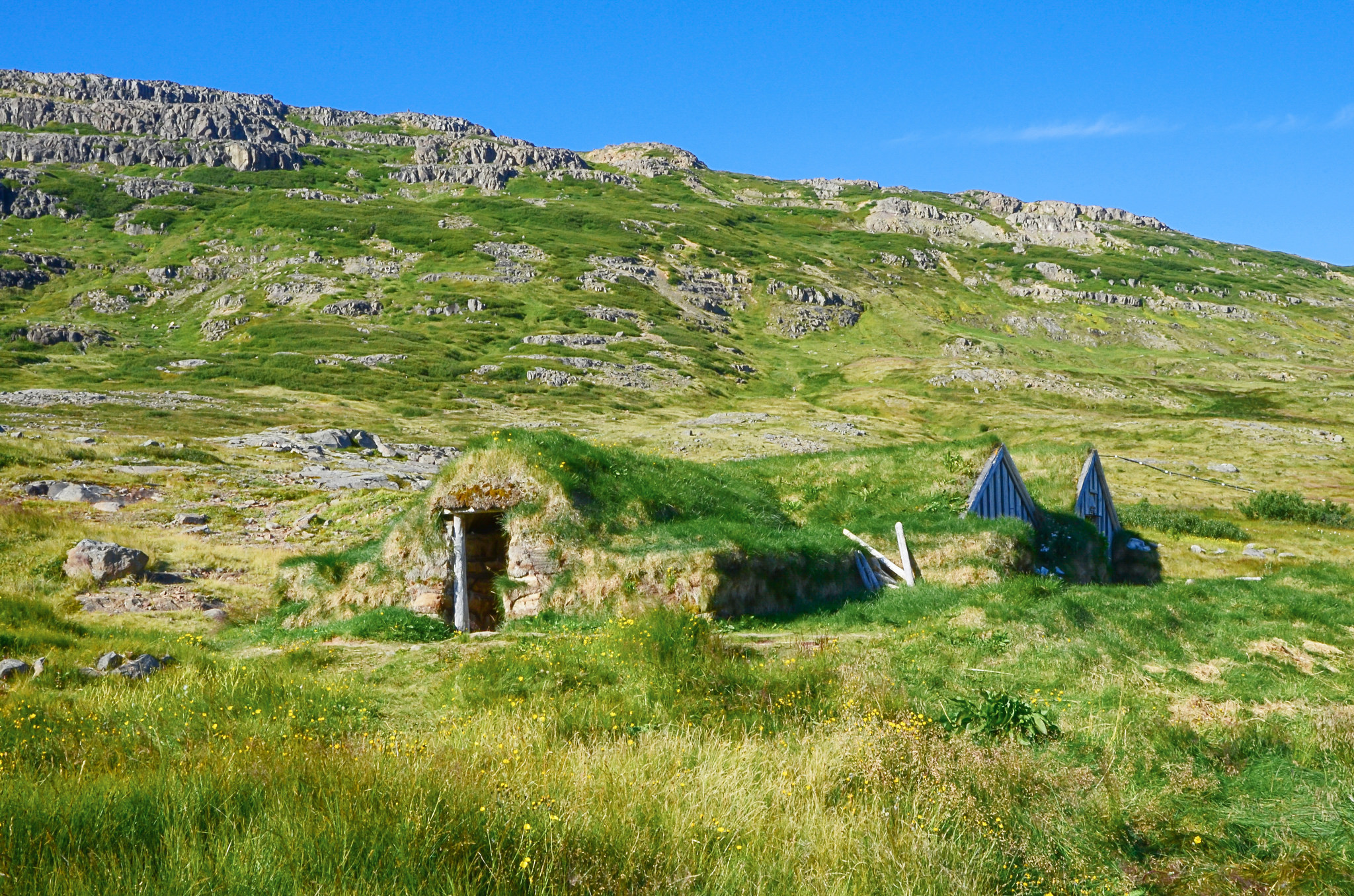
Photo by Theo Crazzolara
The typical construction of an Icelandic turf house starts with a large foundation made of flat stones. The back of the building was often dug into the hillside and the front stuck out with a pointed roof which was covered in grass. Then the wooden frame was constructed to hold the load of a turf roof. The frame is then clad with turf, often in two layers to help insulate. The sturdy walls were made of stone sandwiched between turf bricks, sometimes played out in a fashionable herringbone style. The entire structure was covered in turf and the growing grass helps to make the structure more sturdy. The only exposed wood was at the doorway where the frame was decorated. This door led you into a hall where you were usually met by a fire. The rooms were often below ground where the earth doesn’t freeze. All the warmth in the home was provided by the fire in the kitchen since heating from coal, oil, or wood stoves was not available until the 19th century. The flooring was typically wood, stone or just earth, depending on the buildings purpose.
Easy to maintain, the turf roofs and walls needed to be trimmed regularly but the structures do collapse eventually and need to either be rebuilt or repaired. When the houses do collapse, they only leave a mound of earth behind.
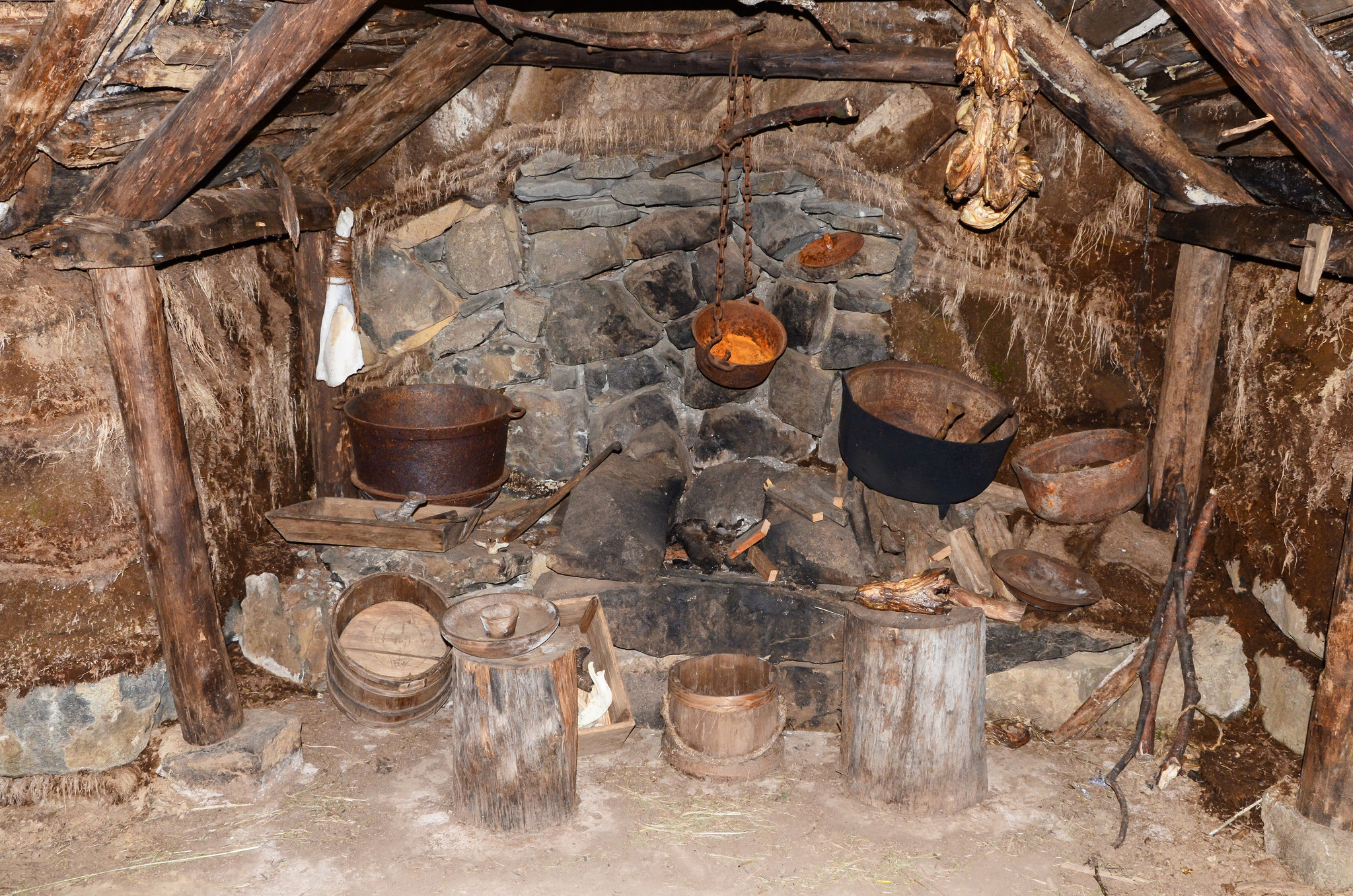
Photo by Theo Crazzolara
Turf houses had been continually constructed over a period of 1000 years but Icelandic architecture changed a lot in that time. In the 14th century the Viking style longhouses were gradually abandoned, replaced by many smaller and specialised buildings which interconnected. Later, in the 18th century, a new Burstabaer style started to gain momentum, the most common version of the Icelandic turf house. Many have survived well into the 20th century.
After World War I, a wave of modernisation swept the island and nearly eradicated the turf houses. Slowly, people moved into a more modern urban building style of wooden houses, clad in corrugated iron. These were later replaced with earthquake resistant reinforced concrete buildings.
In the late 20th and 21st century, the tourist boom brought a rise of interest in this traditional building type. The Icelandic turf house was given a help in its preservation in 2011 when turf housing was nominated for UNESCO World Heritage status.
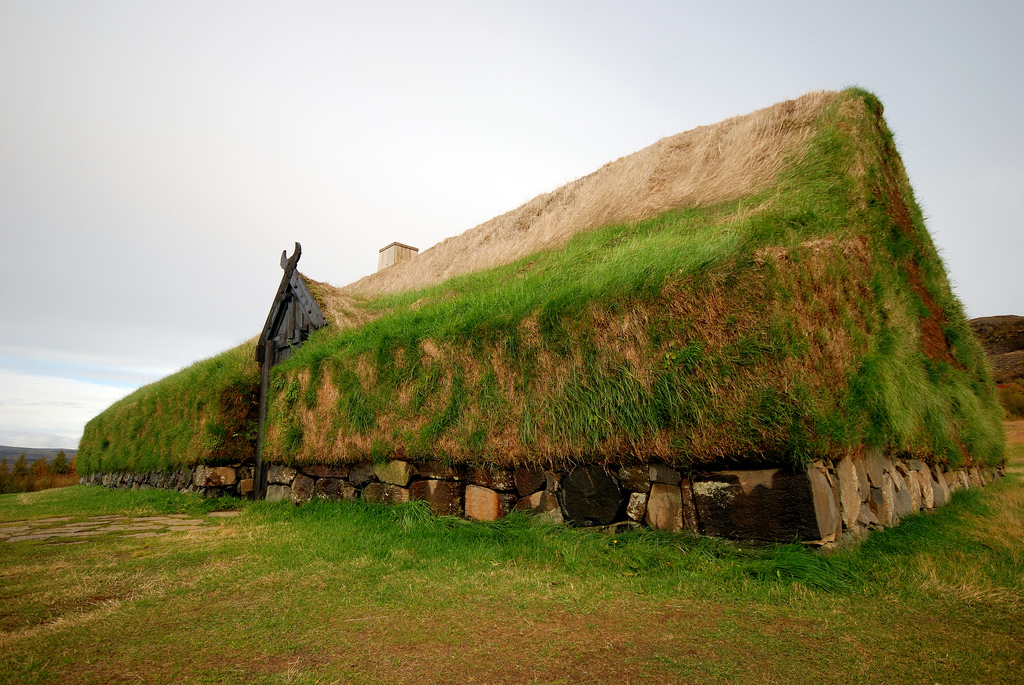
Photo by Thomas Ormston
The practice of building turf houses is not widely known today and so new initiatives for heritage preservation have been set up to pass on these skills. Every year there is a seminar run by Fornverkaskólinn in collaboration with Hólar University and Skagafjörður Heritage Museum, where you can learn how to construct a traditional Icelandic house. Over the last years the participants of this seminar have helped in restoring Tyrfingsstaðir, a turf house deserted in 1969. This seminar not only helps maintain knowledge of this cultural construction method but it also works to preserve Icelandic heritage.
The typical life expectancy of a turf house was 20 years, serving one generation depending on frost, before it must undergo repairs. The more sturdy of houses could often last from 50 to 70 years.
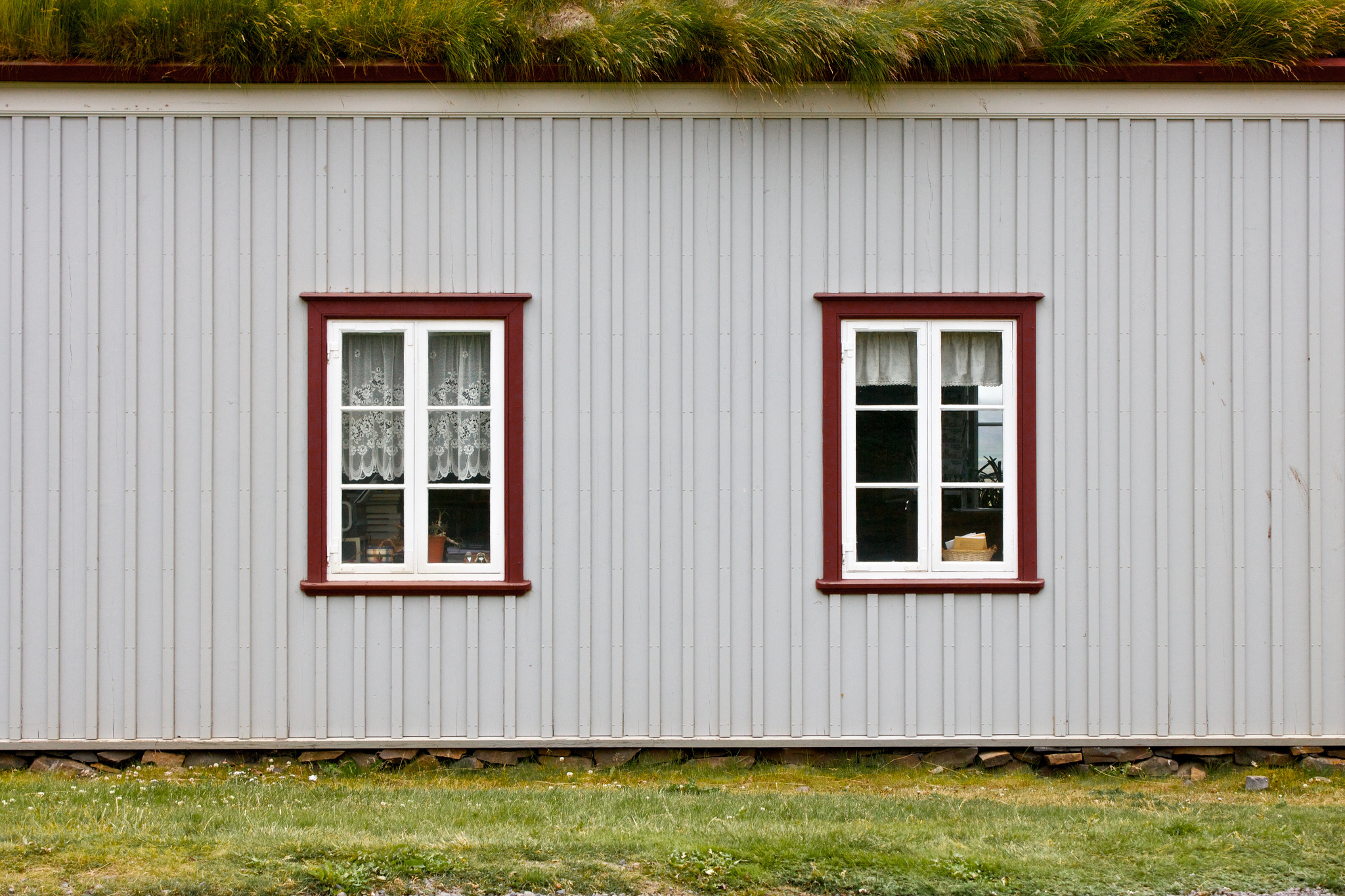
Photo by Marco Bellucci
Turf houses took a lot of maintenance and so sadly not many are still standing. Around half of the Icelandic nation still lived in turf houses in 1910. As Reykjavik grew, people moved into more modern dwellings and by the 60’s there were 234 inhabited turf homes in Iceland. Moving into the 70’s, most of these turf houses were deserted with families opting for corrugated timber homes instead.
These buildings are biodegradable, eco-friendly and energy-efficient. Rooted strongly in the Icelandic culture, would you stay in a turf house?
Iceland, Healthiest Country in the World
Text by Sonia Nicolson
Iceland, Healthiest Country in the World
One of the key topics discussed at the World Economic Forum’s Annual Meeting 2017 was the future of healthcare, and Iceland topped a new ranking of the world’s healthiest countries. The study, published by The Lancet, assessed 33 health-related Sustainable Development Goal (SDG) indicators in 188 countries across 25 years. The results from the SDG present a global picture of the progress made, and the work still needed, to achieve the Millennium Developments global goals.
Using the Global Burden of Diseases, Injuries and Risk Factors Study 2015, the research examines health in countries around the world to create a global ranking. Iceland, Sweden, Singapore, Andorra and the UK were the top 5 ranking countries; Iceland took the top spot by one decimal place. The report singled out major factors such as tobacco control measures and Iceland’s publicly funded healthcare.
Improved Icelandic Healthcare
In the past 15 years, there has been significant progress with universal healthcare showing the greatest improvement followed by family planning and hygiene developments. It’s not all good news however with hepatitis B on the increase, alcohol consumption becoming more problematic and numbers of overweight children now worse than in 2000.
“Although considerable progress on the health-related MDG indicators has been made, these gains will need to be sustained and, in many cases, accelerated to achieve the ambitious SDG targets,” write the authors of The Lancet.
The authors examined the link between the health-related indicators and the socio-demographic Index; a measure based on income per person, average educational in the population over 15 years old, and total fertility rate.
Icelandic Diet and Lifestyle
There is a wealth of contributing factors to a good Icelandic diet and lifestyle; water, food and exercise. The diet often focuses on fish and healthy dairy products such as Skyr. A nation is famous for its rivers, waterfalls, glaciers and hot springs, the water in Iceland is some of the cleanest in the world. Icelandic homes are heated using volcanic water pumped from a variety of hot springs all around the country. These hot springs have been used for centuries by locals to bathe, wash clothes and cook in. Its also thought that the natural hot water and minerals it contains can do wonders for your health and skin.
People eat a lot of fresh and dried fish, and lamb. There are roughly a million sheep living in Iceland, 3 times the population. Sheep are left to roam the countryside freely throughout summer, grazing on thyme and adding to their flavour. Recently, Icelanders have become more concerned with eating healthily, with athletes promoting healthy options. Vegans and vegetarians have gained more healthy options in the city and restaurants such as Glo are doing well.
The average life expectancy in Iceland is just over 82 years old. Exercise plays a big part in this with many people going hiking, swimming, signing up for marathons and trying out yoga. The typical modern Icelandic lifestyle includes a selection of fitness options focusing on strength, protein intake and a clean diet. Icelandic women practice weight lifting in their gym routine, and teens compete in nationally televised CrossFit-style obstacle courses, gaining a lot of attention.
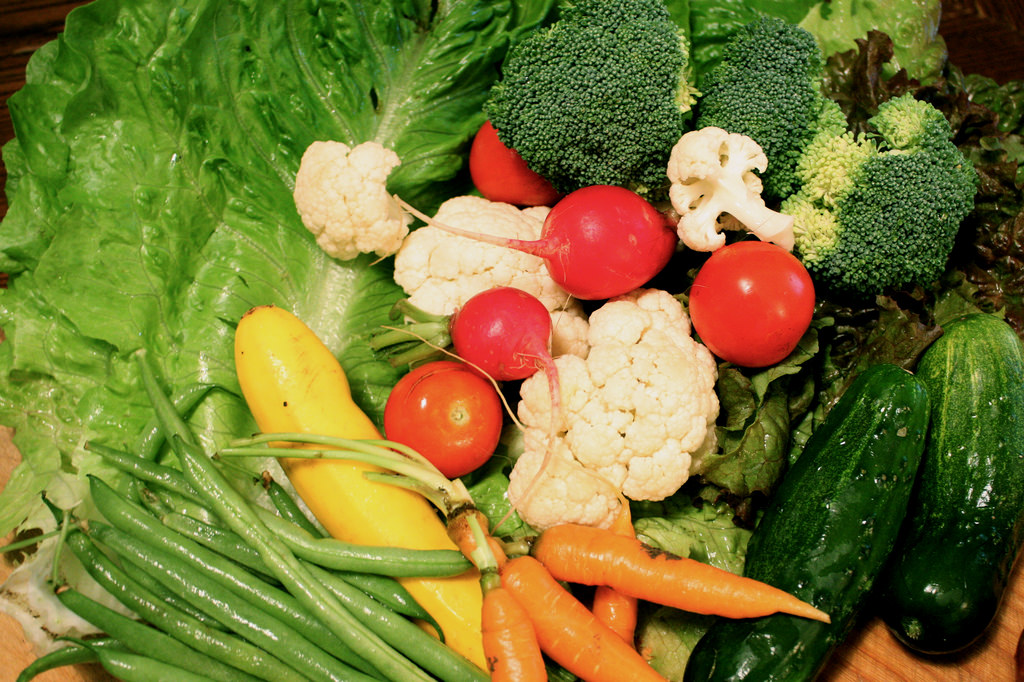
Photo by John Nakamura Remy
Icelands Strongest Man and Woman
Iceland is famous for its Sagas with tales of heroes with incredible strength. From Vikings and Norse Gods, to Strongman champions, the nations football team to the modern trend of CrossFit.
The glorification of raw strength is nothing new in Iceland. Þór was known as the God of Thunder, Wrestling and Fertility, and Týr, was the God of War and Tactics. Both were described as physically, fiercely fit and strong but while Þór tended to smash things with his hammer, Týr used his brain too.
A Land of Rough and Unforgiving Natural Conditions
Iceland has over the years required a certain physical strength to survive with an attitude that everyone had to pull their own weight. Moving into the 20th century, Icelandic women in Reykjavik carried washing loads from the city centre to the pools in Laugardalur, a 5 kilometres walk. They would work for around 10 hours before carrying their mountain of wet laundry back home again. Foreign travellers often likened the Icelandic washing woman’s strength to the power of a pack horse.
Throughout history, Icelanders tested their strength by lifting stones. On Djúpalónssandura black sand beach in the Snaefellsnes Peninsula you will notice four large stones of varying sizes weighing between 23kg (50lbs) and 155kg (342lbs). These were used to test the strength of fishermen. The stones are named Amlodi (useless), Halfdreattingur (weakling), Halfsterkur (half-strong) and Fullsterkur (full-strong). A person of ‘Full Strength’ gains the Fullsterkur status by lifting, carrying and placing a rock of 155kg or heavier on a platform waist height or higher. Icelander might not need fishermen who can lift the Fullsterkur stones anymore but many still value strength as a representation of an enduring spirit.
Strongman, Strongwoman
Originally, militant leaders who had keep command by their sheer force of will, rather than raw physical strength were referred to as a ‘strongman’. In the mid 19th century the word was linked to specific forms of athletic strengths common in circus acts. Todays strongman is a phenomenon seen in films and advertising, idols to look up to, not commonly seen on a battlefield.
Iceland has long been know for its strength and power, a nation of just 334,000 people with an outstanding number of ‘world’s-strongest’ men and women; Jón Páll Sigmarsson, Magnús Ver Magnússon and Hafþór Júlíus Björnsson (the Mountain from Game of Thrones).
The Icelandic strongman is the most famous of Iceland’s power icons but the country is home to plenty of superwomen too. Katrín Tanja, worlds fittest women in 2015, and Anníe Mist, two times fittest woman CrossFit Games and six times Games competitor. The world famous weightlifter, Ragnheiður Sara Sigmundardóttir, is known for her strength and physical prowess inspiring younger stars such as recent winner of the European powerlifting championships, Sóley Jónsdóttir. Sóley performed an astonishing 215kg squat at the tender age of 15.
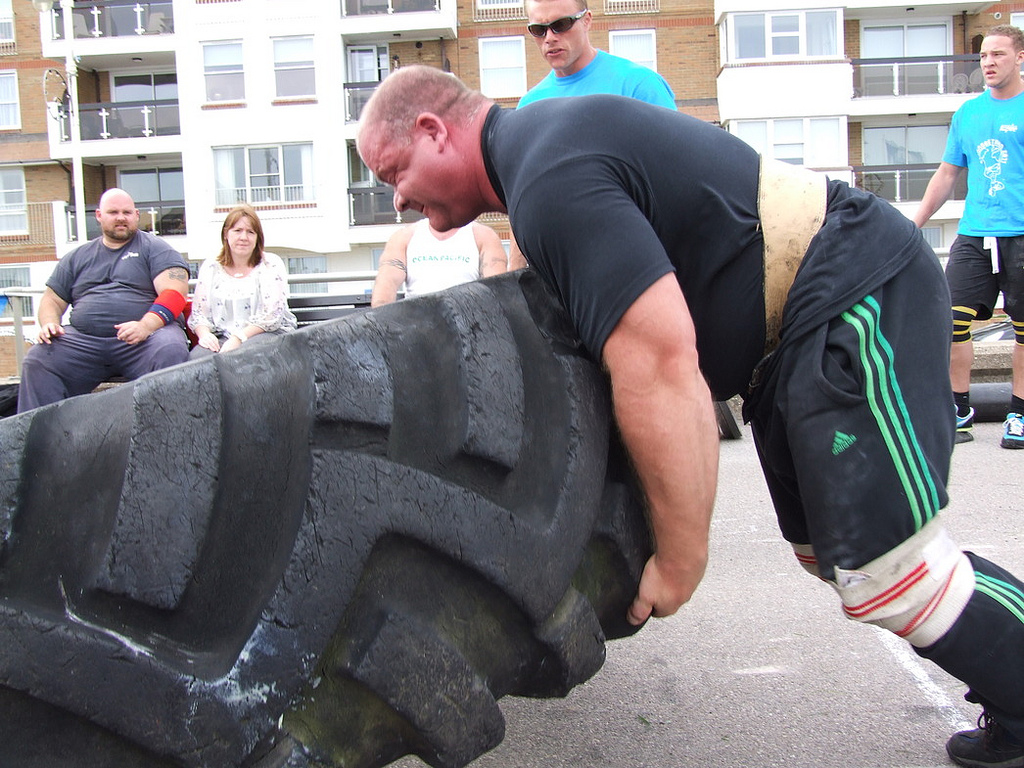
Photo by sumoman.co.uk
Icelandic Wellbeing
With clean air and low pollution, wellbeing in Iceland is good. Though the population is small, the country is comparatively large meaning everyone has space. Equal rights are strongly fought for and the gender gap is the smallest in the world. Crime is rare and which helps the people of Iceland feel safe and therefore happier.
It’s easy to see that Iceland can be considered one of the healthiest places in the world.

